The S&W 610 holds a special place in my heart. A version of the 610 was one of the revolvers I owned very early in my shooting life. Unfortunately it was one of those guns that lasted only briefly in my collection. To be honest I probably purchased it before its time; that is, before ammunition manufacturers were adequately supporting the 10mm Auto.
But the age of the 10mm revolver seems to be dawning and the 610 is back! The second encore of the S&W 610 was announced in April of this year, and we were fortunate to get an early T&E sample.
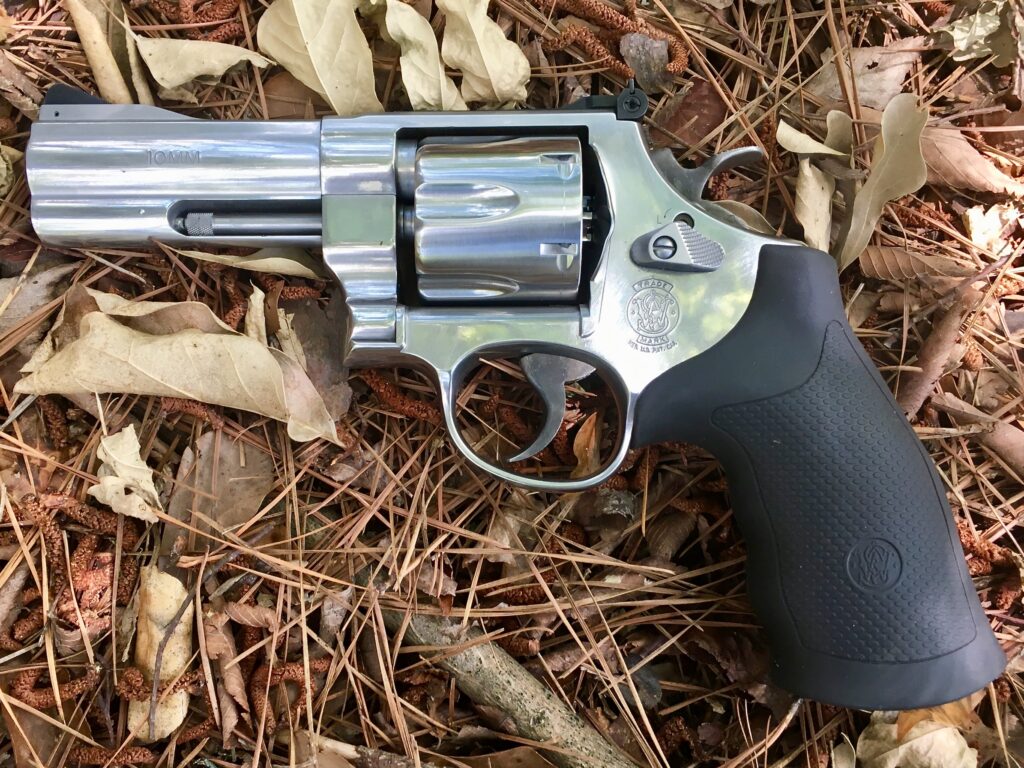
I conducted this review in accordance with our Field Report Standard Operating Procedure. I did deviate from our S.O.P. slightly; the round-count for the 610 is a little off, as I will explain further down the page.
The S&W 610 Revolver
The 610 is a double action, stainless steel, six-shot revolver chambered in 10mm Auto/.40 S&W. Two barrel lengths are offered for the Model 610: 4″ and 6.5″. Through a twist of fate, we got to spend some time with both of these barrel lengths. Unfortunately we didn’t have them at the same time, so there are no side-by-side photos. I’ll go into more detail later, but the first T&E gun had to be returned. I asked for the 6.5″ gun on the second go ’round, and I’m really glad I did. I’ll talk about the results with both guns below.
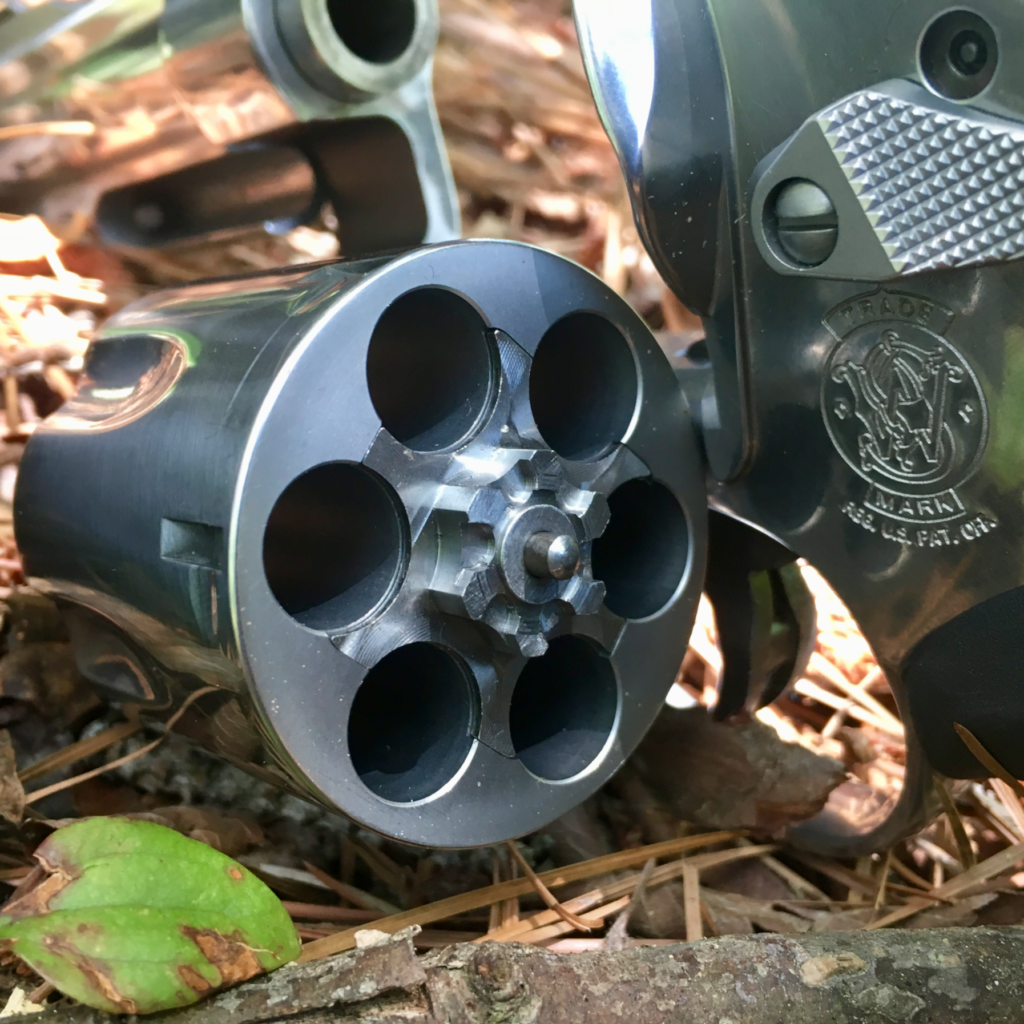
Unlike some of the new were revolvers from Big Blue, the 610’s barrel is a “legacy” one-piece design. The 610’s front sight is pinned on to the barrel, an improvement (in my opinion) over the milled front sights of yesteryear. The barrel features a full-length, heavy underlug that shrouds a long ejector rod with a throw of 0.935″.
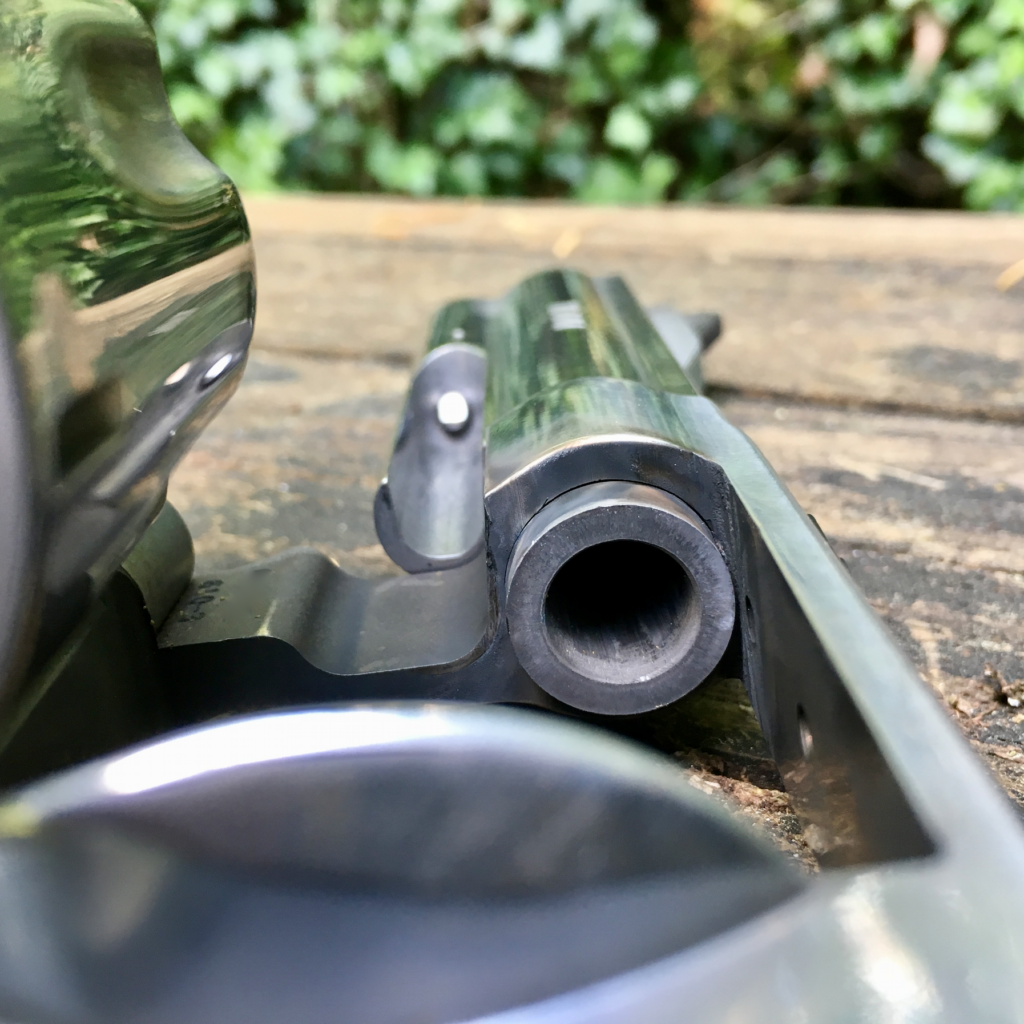
This hefty shooting iron is built around Smith’s large N-frame, and the grip frame is covered by S&W’s semi-grooved rubber grips. Despite my general dislike of finger grooves, I actually happen to like this grip on smaller frames. On the big N-Frame I found it just a bit too large for my hands. While trigger-reach was doable, it wasn’t ideal for my hands.
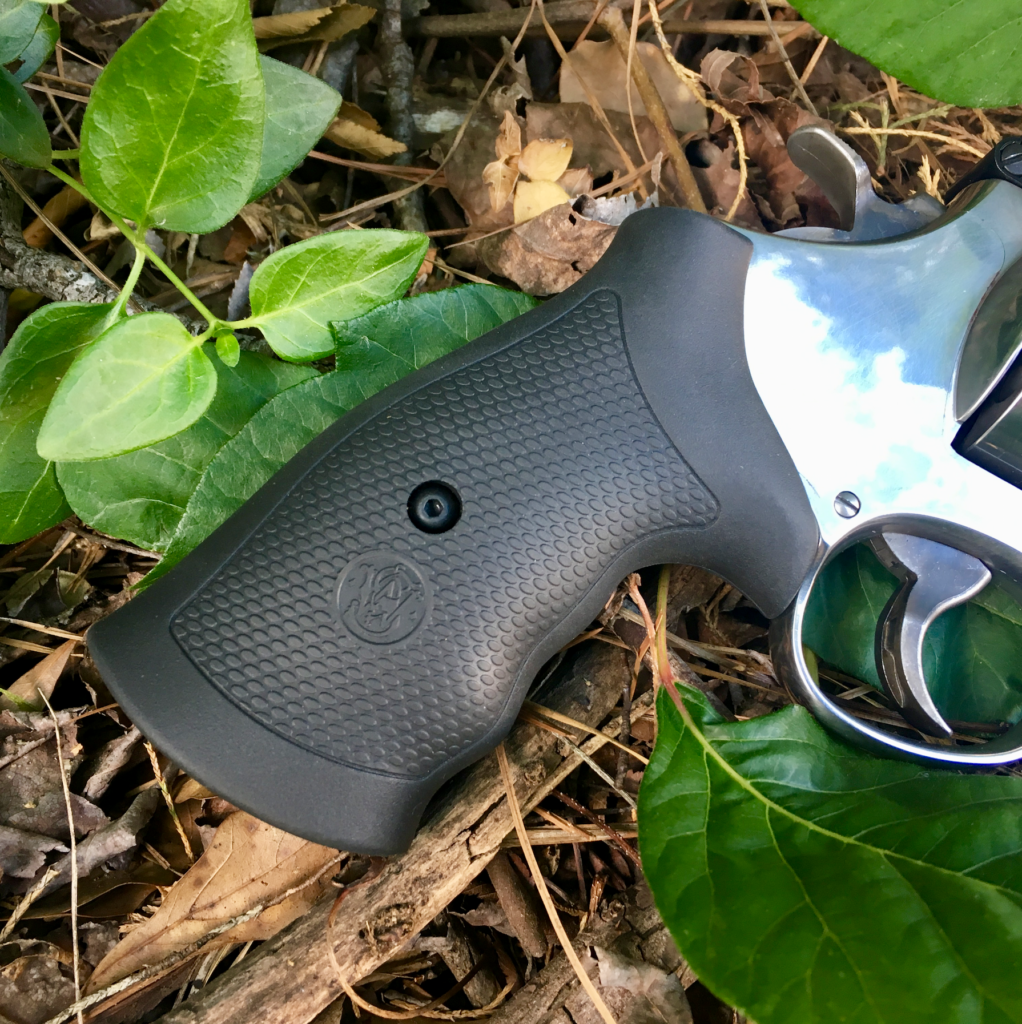
Modern revolvers seem to have suffered a general downward trend in finish. After seeing some of the dull, matte finishes of new K-Frames – and in fairness, revolvers of various other provenance, as well – I didn’t have high expectations for the 610-3. I am happy to report that the finish of the current iteration of the 10mm N-Frame is excellent and this is one handsome revolver. The satin stainless steel finish is every bit as good as that of my old 686-3. Fitment of parts is also very good.
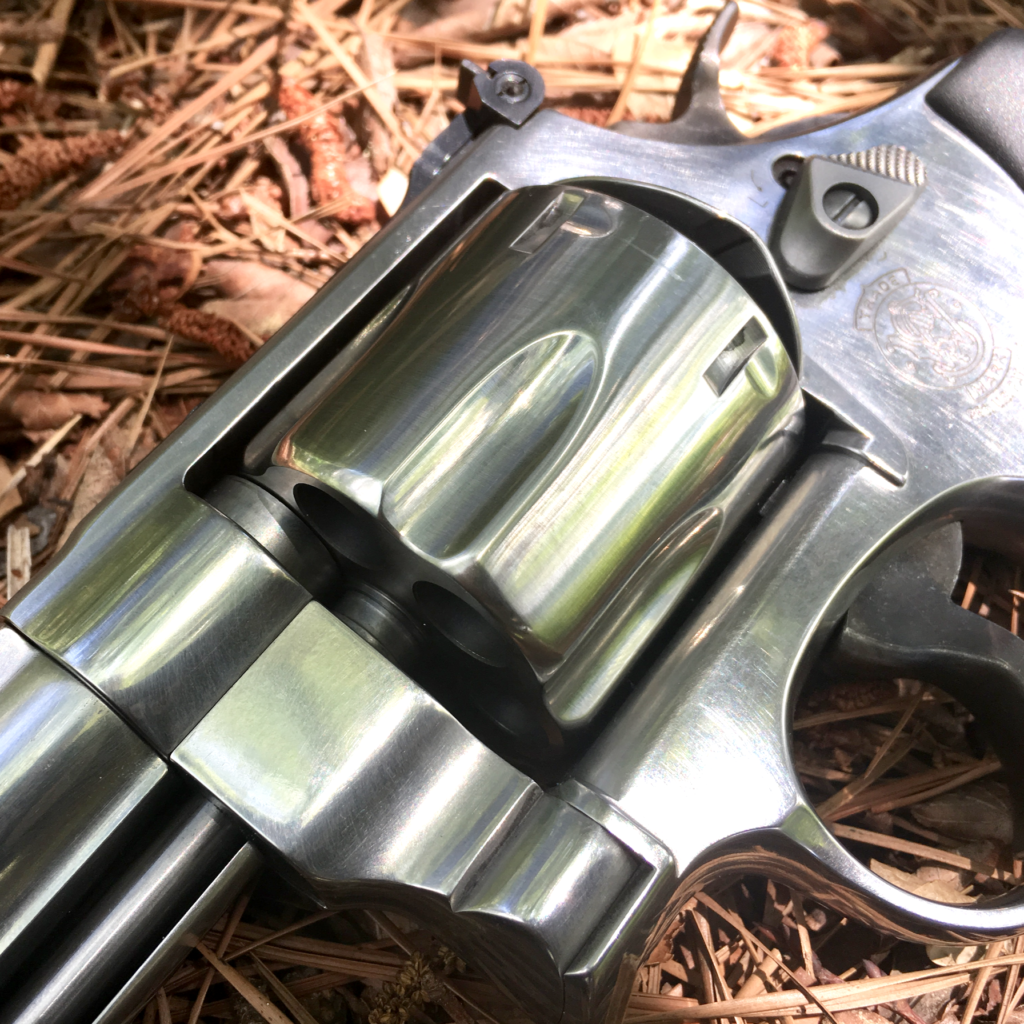
Like most (though certainly not all) Smith & Wesson revolvers of the current era, the Model 610-3 is hobbled with the much loathed internal locking system. Having not played with one in a while I did activate it, confirmed that it locked the gun up, then deactivated it. I placed the two provided keys back in the blue box and didn’t touch them again. The lock proved trouble-free for the entirety of my testing.
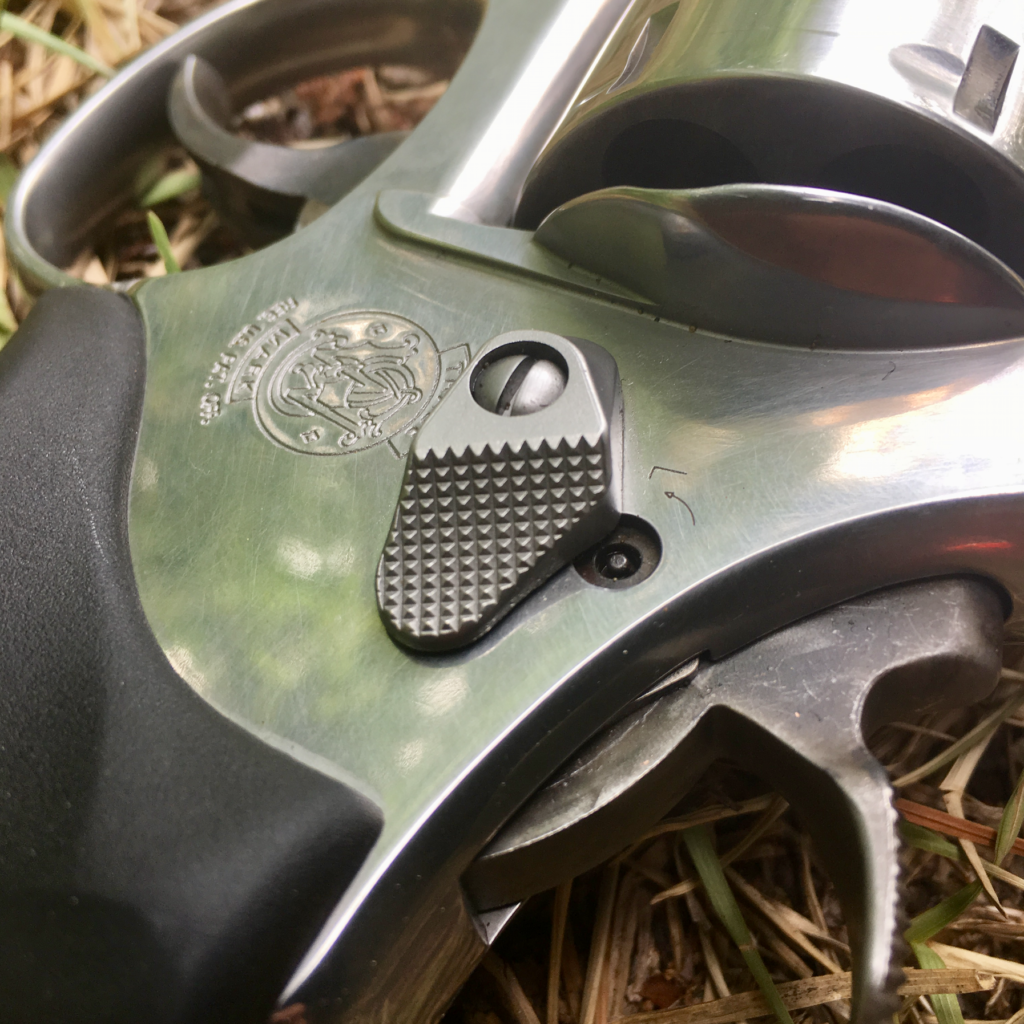
Function: Sights
Sights are the traditional S&W arrangement: an adjustable rear sight mated to a fixed front sight. The rear sight is adjustable for both windage and elevation, allowing one to tailor point of aim to match the varying points-of-impact of variously-powered 10mm Auto and .40 S&W ammunition.
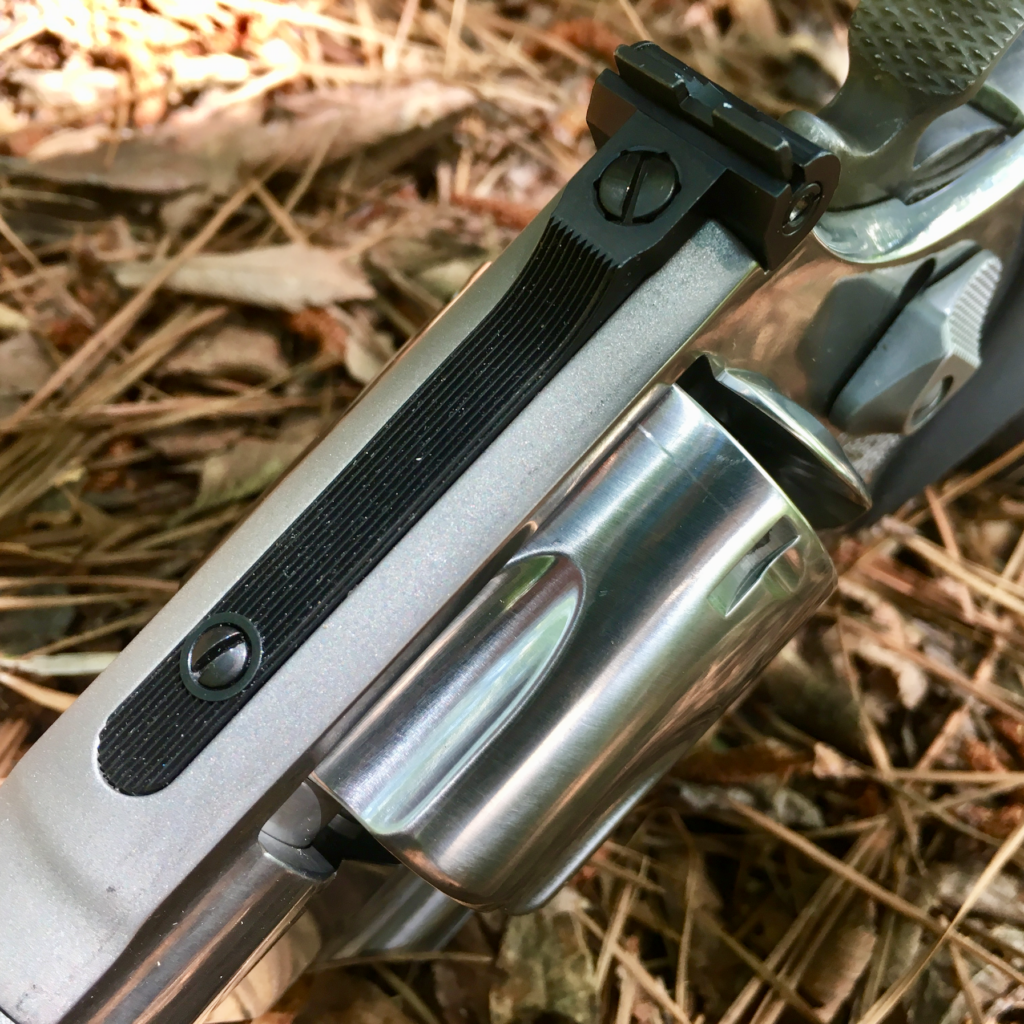
The front sight on the new-for-’19 Model 610 is pinned in place, making for easy interchange. The extremely well-executed front sight is crisp and sharply serrated, and I brook no complaint with it whatsoever.
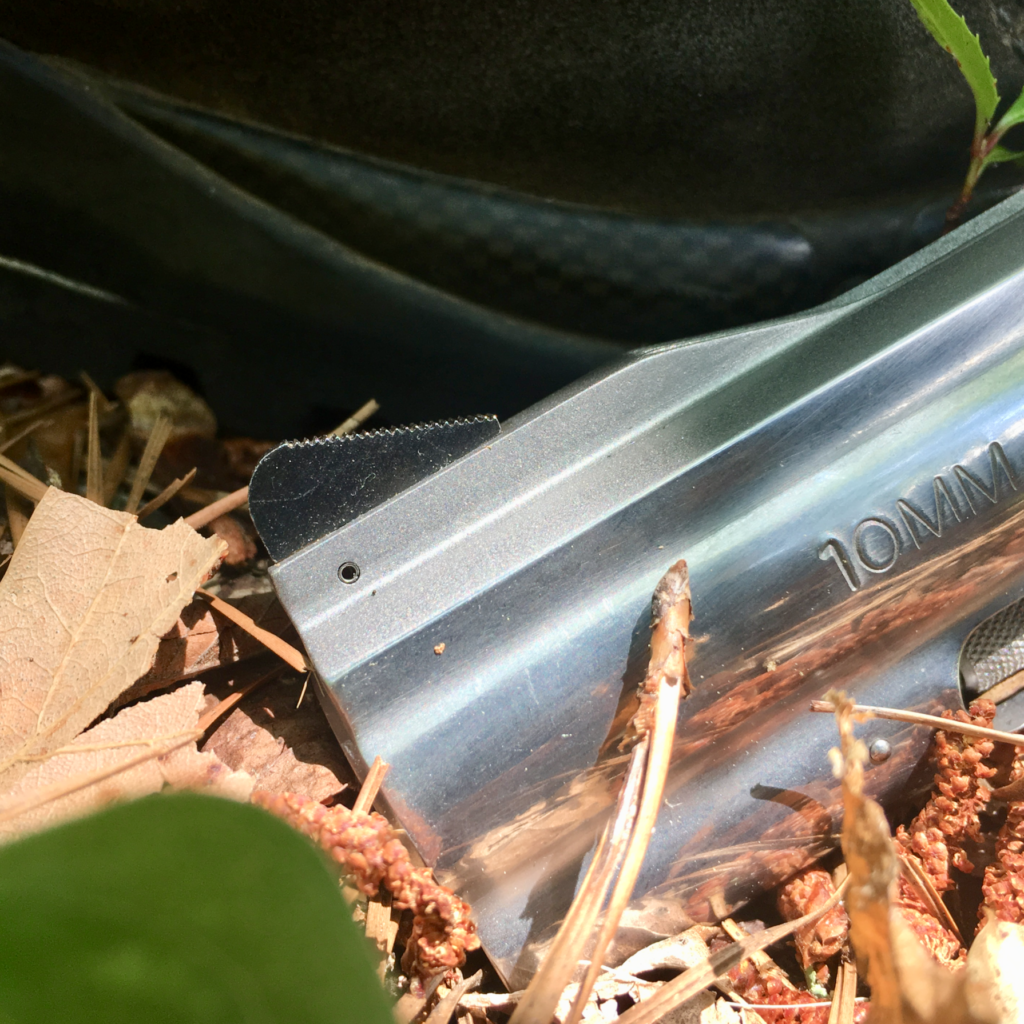
Worth noting, I had sight issues on both T&E samples. The problem with the 6.5″ gun was loosening of the screws that hold the rear sight assembly in place. During my second range session with it I found this screw backing out and the assembly thrusting itself out of the channel in the top strap. A little Loctite fixed this. Otherwise the sights were classic S&W adjustable rear sights, and the results speak for themselves. I will address the issues with the 4″ 610 a little further down.
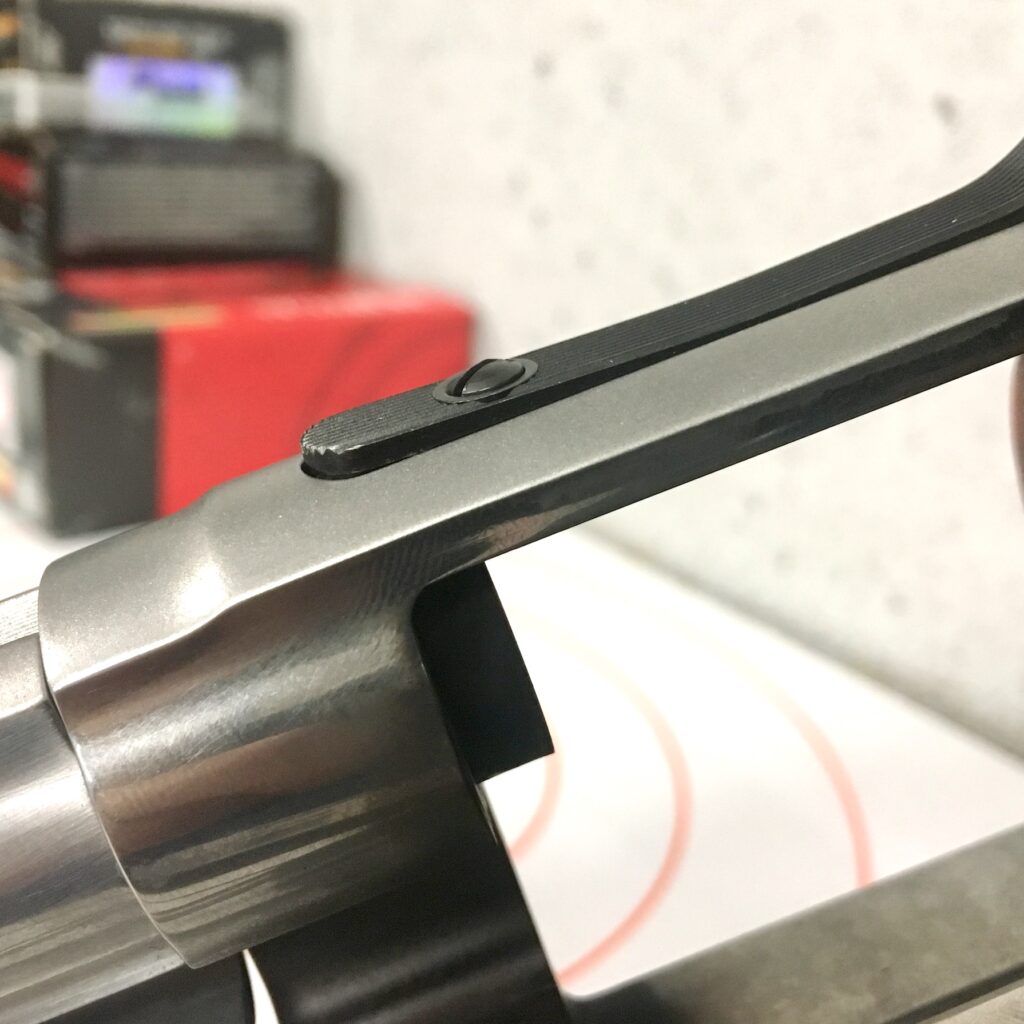
Function: Trigger
The face of the 610’s trigger is smooth and somewhat rounded in the “combat trigger” style. The hammer, however, is wide and slightly down-turned in the target style. The double action pull was quite smooth – so smooth in fact that it belied its weight. Average pulls (of six measured with each revolver) came in at just a tad over 12 1/2 pounds. You’d never know this if you pulled the trigger just two or three (or six) times. Fifty rounds into a range session, however, I found I had to give my finger a rest.
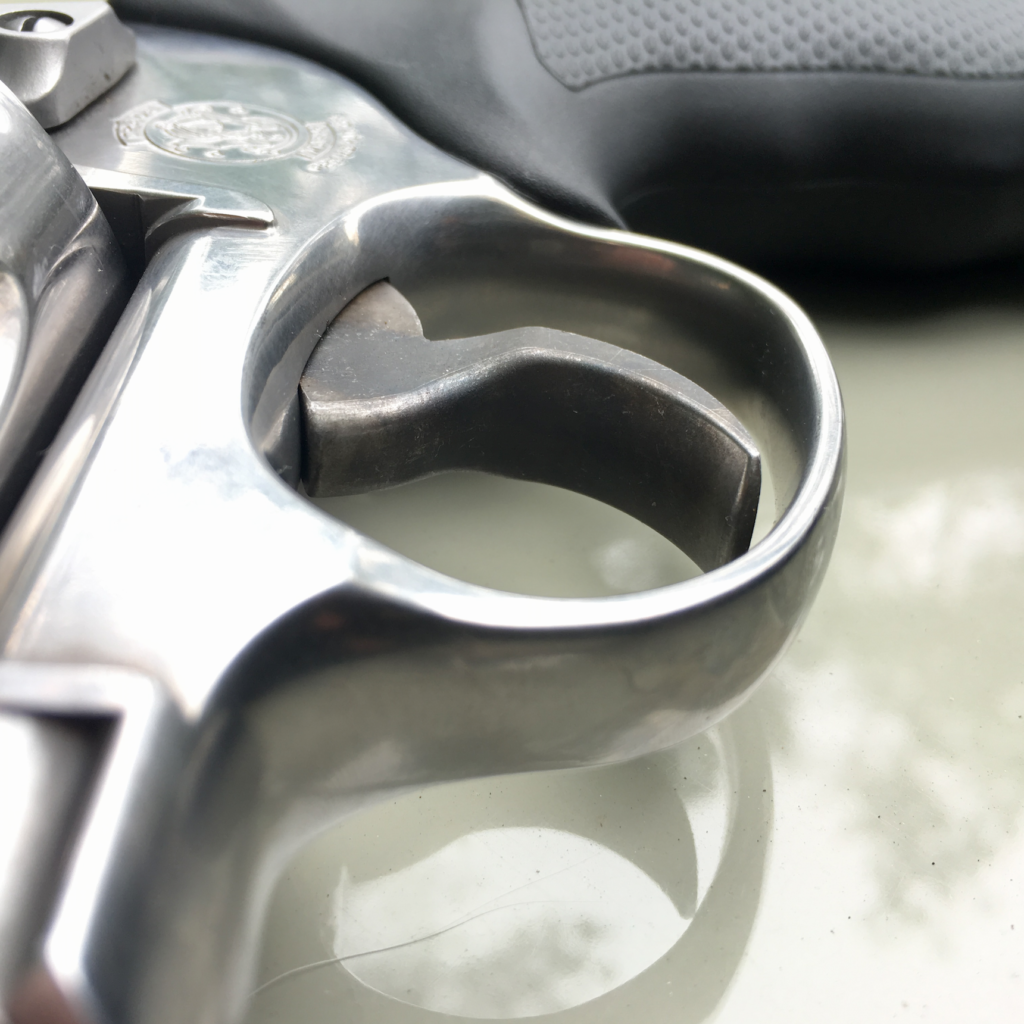
The target hammer seems perfectly appropriate on this revolver as I can definitely imagine the 610 being used for longer-range work. However, the single action pull was also surprisingly heavy at an average of 4.5 pounds. Like the DA trigger, this could probably be reduced via some fancy spring work. Also like the double action trigger, one need not worry about smoothing the SA trigger. It is the cleanest break of any single action revolver trigger I have ever experienced, and again, it made me second-guess the results of my trigger pull gauge.
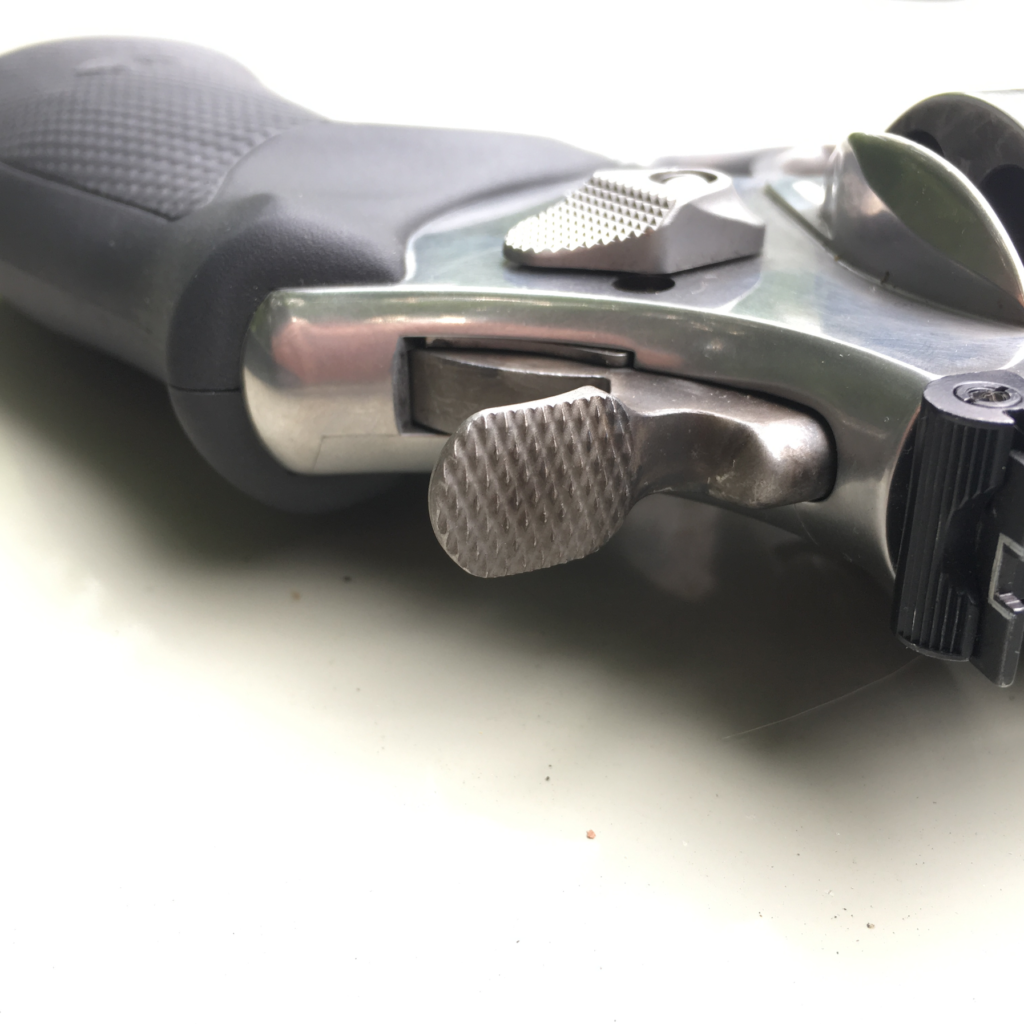 Smith & Wesson occasionally gets some flak for triggers on their modern revolvers. I have some criticism of a lot of things on newer revolvers. The smoothness of the triggers on these guns (and another you will see reviewed here soon) are not one of them. They are outstanding. The weight, on the other hand, could use some work.
Smith & Wesson occasionally gets some flak for triggers on their modern revolvers. I have some criticism of a lot of things on newer revolvers. The smoothness of the triggers on these guns (and another you will see reviewed here soon) are not one of them. They are outstanding. The weight, on the other hand, could use some work.
Range Sessions & Problems with the 4″ 610-3
I put a total of 762 rounds through both models of the 610-3. The first 278 rounds were fired with the 4″ version, and were as follows:
13 May 2019
– 84 rounds, Prvi Partisan 170-grain FPJ
– 50 rounds, Remington 180-grain MC
– 6 rounds, Sig 180-grain V-Crown JHP
– 6 rounds Cor-Bon 165-grain JHP
– 6 rounds, Double Tap 180-grain Bonded Defense JHP
– 6 rounds, Double Tap 200-grain Controlled Expansion JHP
– 6 rounds, Double Tap 180-grain FMJ Match
– 6 rounds, Double Tap 230-grain Hardcast Solid
Total: 170 rounds
16 May 2019
– 16 rounds, Prvi Partisan 170-grain FPJ
– 50 rounds, Remington 180-grain MC
Total: 66 rounds
03 June 2019
24 rounds, Speer 165-grain Gold Dot (.40 S&W)
12 rounds Double Tap 200-grain Controlled Expansion JHP
6 rounds Double Tap 180-grain Bonded Defense JHP
Total: 42 rounds
I had two issues with the 4″ 610-3. First, it shipped with incorrect moon clips. The original clips were too small, and would not seat full into the gun. Unfortunately, I missed a good opportunity: I should have attempted to correct the issue through customer support channels. I didn’t even think of that until it was too late, and instead reached out to my media contact, who sent me the correct clips.
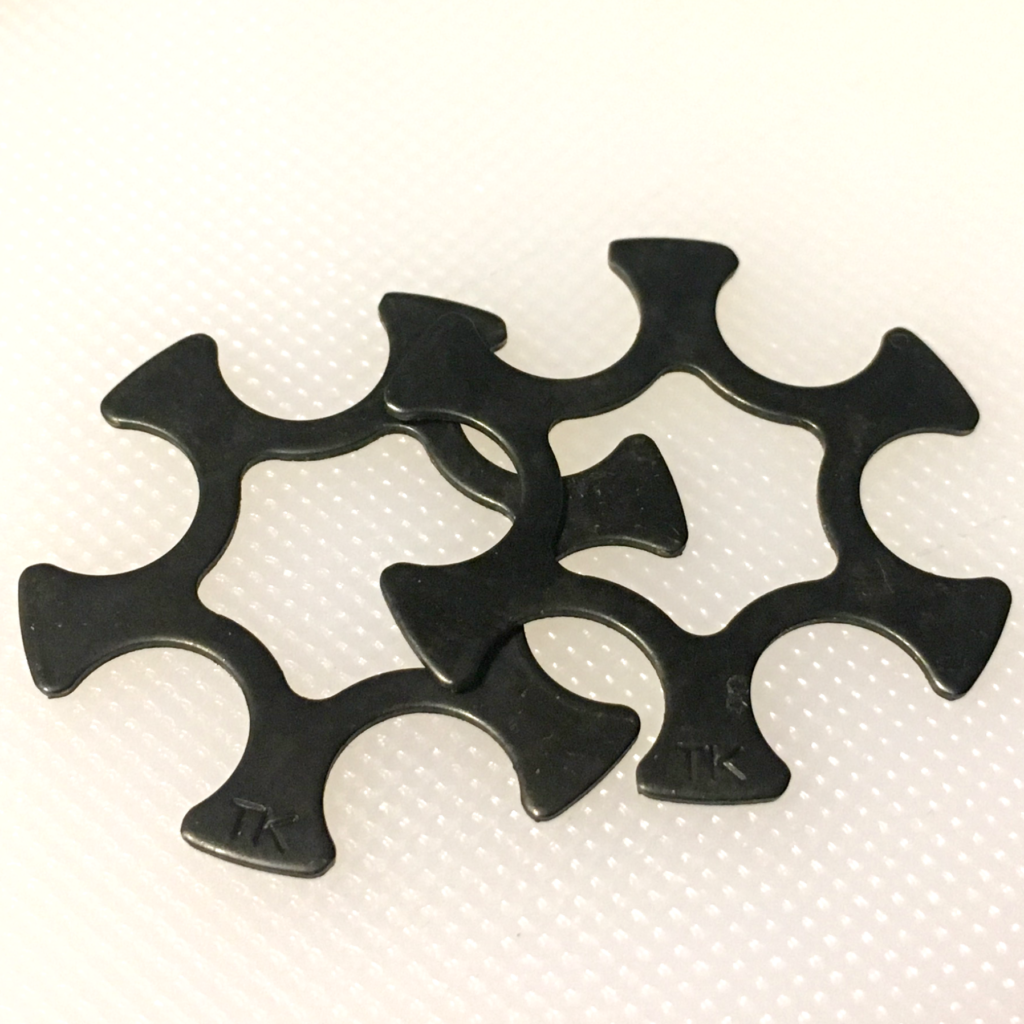
The updated clips arrived and worked perfectly. Obviously a QC oversight was made, because the working moon clips look nothing whatsoever like the correct clips. Once I had received the three correct clips the test proceeded.
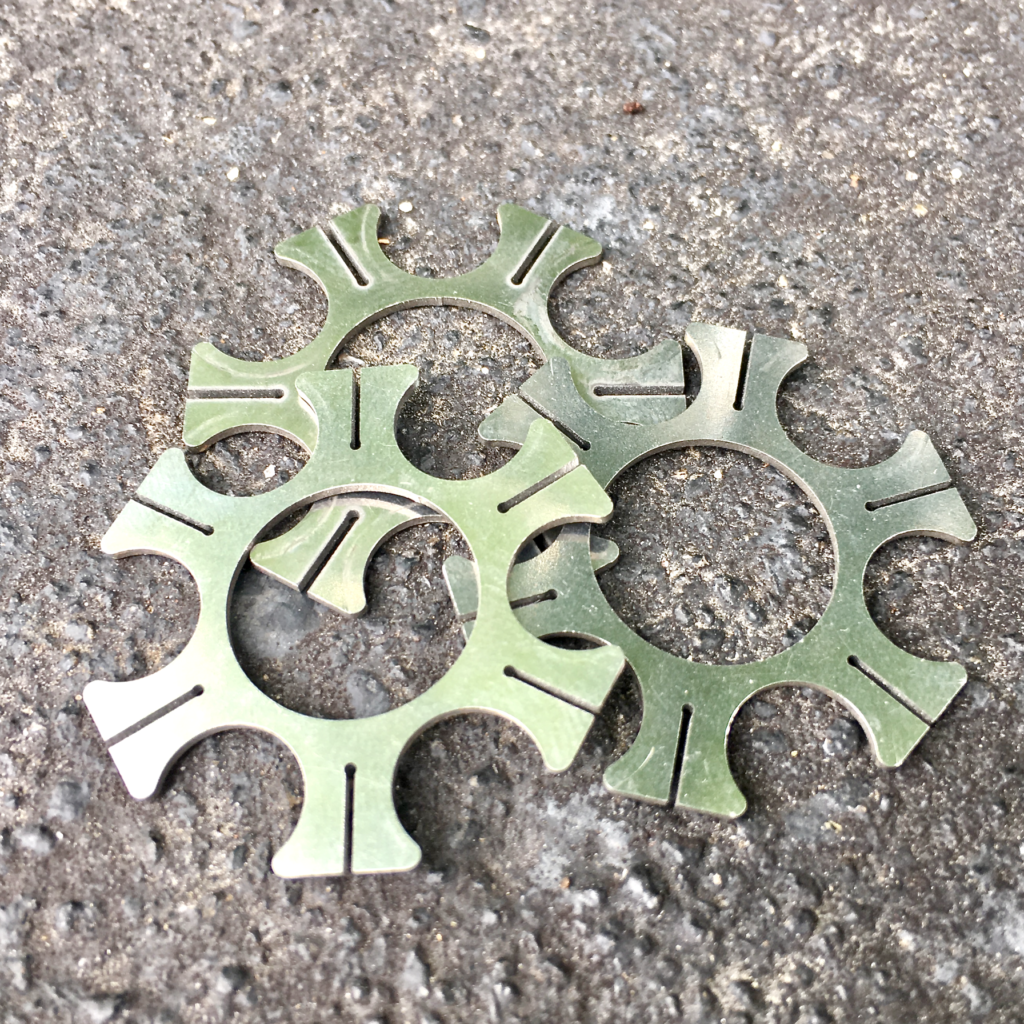
I quickly discovered another, more problematic issue: the point-of-impact. My first string of fire was fired at ten yards, and was just a warm-up round to get a feel for the gun. My first six shots impacted roughly 10″ to the left. Yes, 10″ left of center at just 10 yards. Not a big deal, I thought: that’s what adjustable sights are for. So I adjusted and adjusted. I had to traverse the rear blade so far to the right that it was beginning to poke out of its carriage.
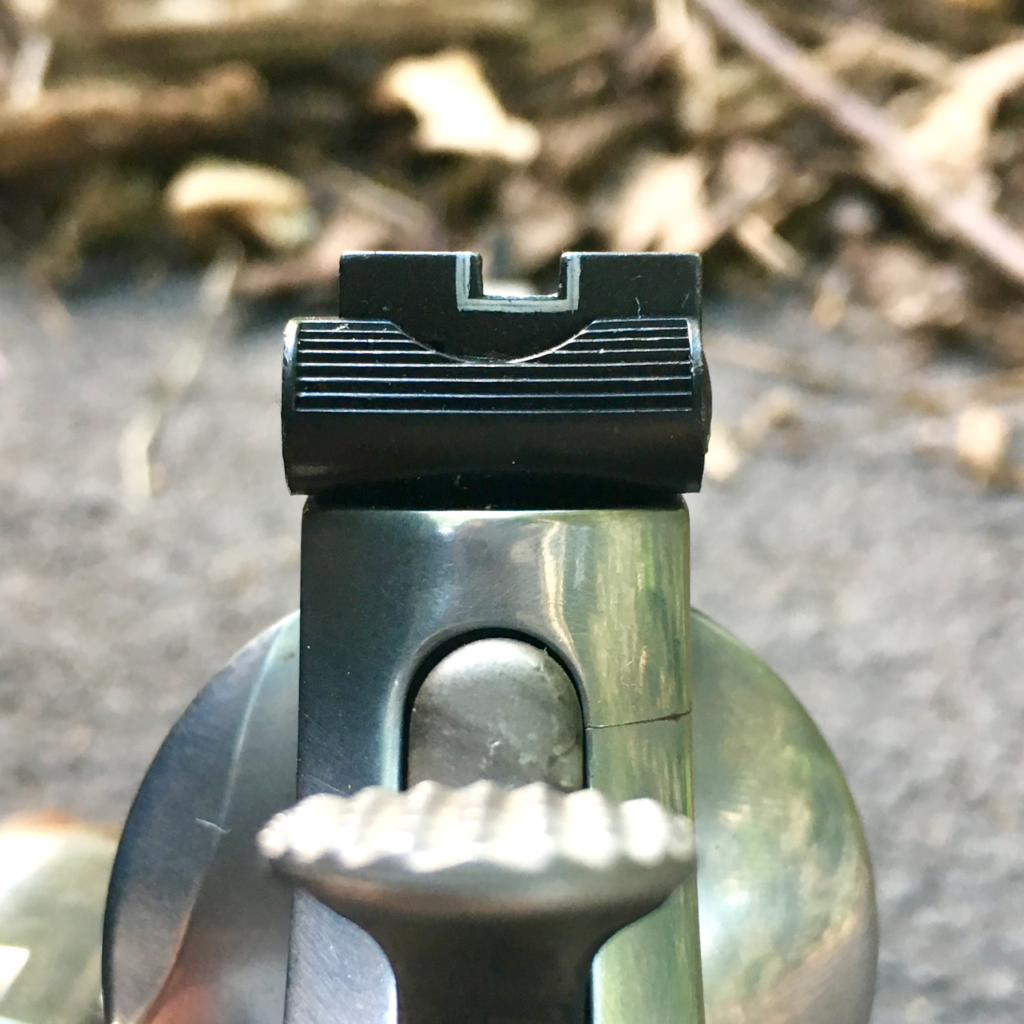
Once adjusted to such an extent the gun shot OK, but I was never fully satisfied with it. It was adjusted so far to the right that aiming the gun always felt as though I were canting it. Finally, a close inspection revealed that the barrel was not centered on the frame. It had not been completely tightened and was canted to the right. I shipped the gun back to S&W. My media contact was willing to get a new gun out to me immediately, but my change in residency slowed the process a bit.
The long break between the two guns was a blessing in disguise. I’ll be honest, after the results with the 4″ gun I wasn’t too enamored with the 610. I’m glad I gave it a second chance, though. Putting a little space between the first and second revolvers washed away some of the prejudice I had against the 610.
Range Sessions with 6.5″ 610-3
In total I fired 484 rounds through the 6.5″ version of the 610. I had every intention of firing a full 500. After I left the range on Monday I thought I had fired 500, but the math proved otherwise. Unfortunately a stomach bug kept me from getting back out to the range prior to publication of this review. My range sessions with the 6.5″ 610 are as follows:
04 November 2019
– 100 rounds Winchester 180-grain FMJ
– 10 rounds Double Tap Ammo 230-grain Hard Cast Solid
– 10 rounds Winchester Defender 200-grain JHP
Total: 120 rounds
19 November 2019
– 41 rounds Prvi Partisan 170-grain FPJ
– 12 rounds Federal 180-grain Trophy Bonded JSP
– 6 rounds Winchester Defender 200-grain JHP
Total: 59 rounds
22 November 2019
– 50 rounds Winchester 180-grain FMJ
– 50 rounds Remington 180-grain FMJ
– 26 rounds Speer 165-grain Gold Dot .40 S&W
– 20 rounds Federal American Eagle 180-grain FMJ
– 15 rounds Federal 180-grain Trophy Bonded JSP
– 14 rounds Winchester Defender 200-grain JHP
– 14 rounds Sig V-Crown 180-grain JHP
– 10 rounds Federal HST 200-grain JHP
Total: 199 rounds
2 December 2019
– 34 rounds Double Tap Ammo 180-grain FMJ Match
– 14 rounds Double Tap Ammo 180-grain Bonded Defense JHP
– 8 rounds Double Tap Ammo 200-grain Controlled Expansion JHP
– 50 rounds Winchester 180-grain FMJ
Total: 106 rounds
Function: Reliability
I did have one malfunction with the 6.5″ 610-3. It was a light-strike that occurred on the last range session. The ammunition was Double Tap Ammo’s 180-grain FMJ match. I was firing in double-action when the light hit occurred. I stopped, and after waiting a few seconds rotated the chamber backward, and tried again. Still nothing. I stopped, removed the cartridge for a photo, and replaced it. After replacing it in the gun I tried fired it in single action, and it finally ignited.
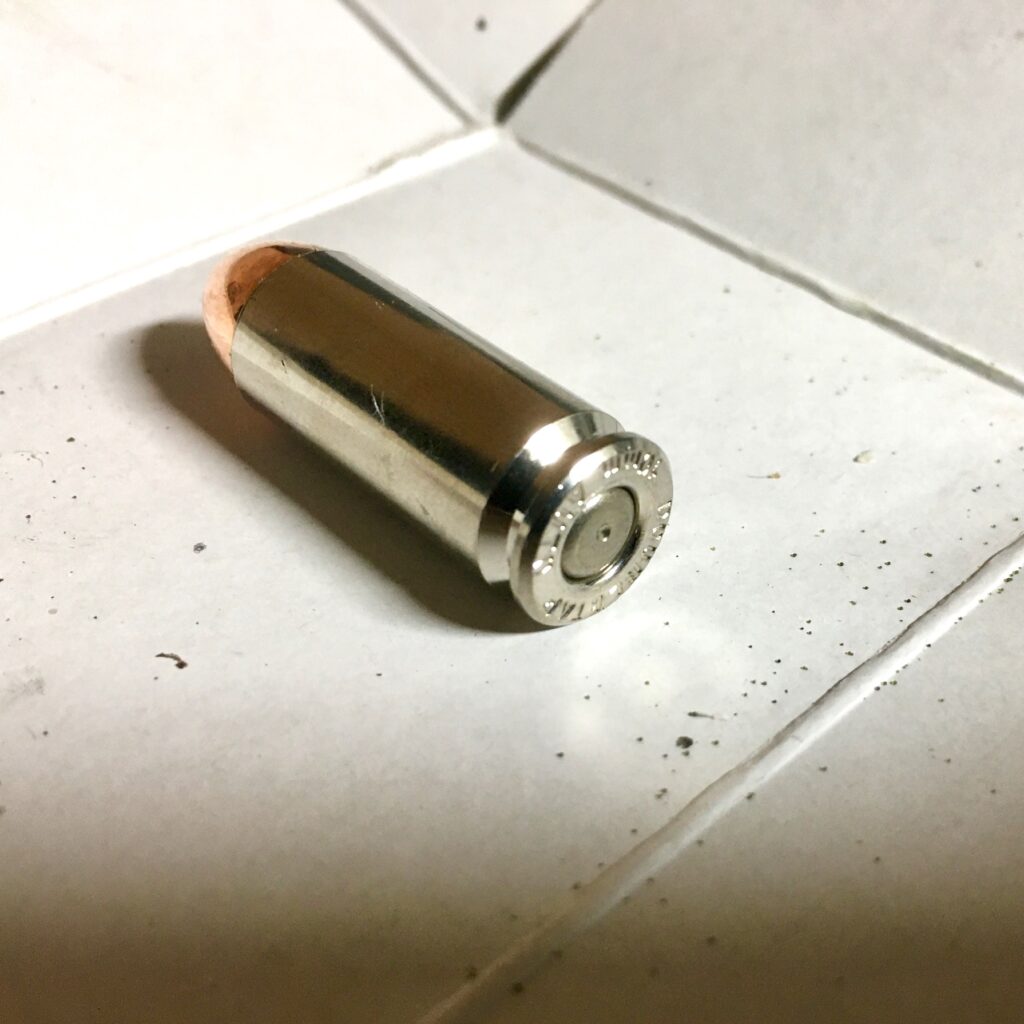
To be honest, I’m not sure what to make of this. The two 610s fired over 780 other rounds without incident, so I have a hard time pointing my finger at the gun. On the other hand, Double Tap ammunition is some of the highest quality ammunition anywhere, so I have a hard time pointing my finger at the ammo. I removed the grip panels and found that the strain screw could stand to be tightened, by maybe 1/8th of a turn. Hardly the “loose” screw I expected, but likely the culprit.
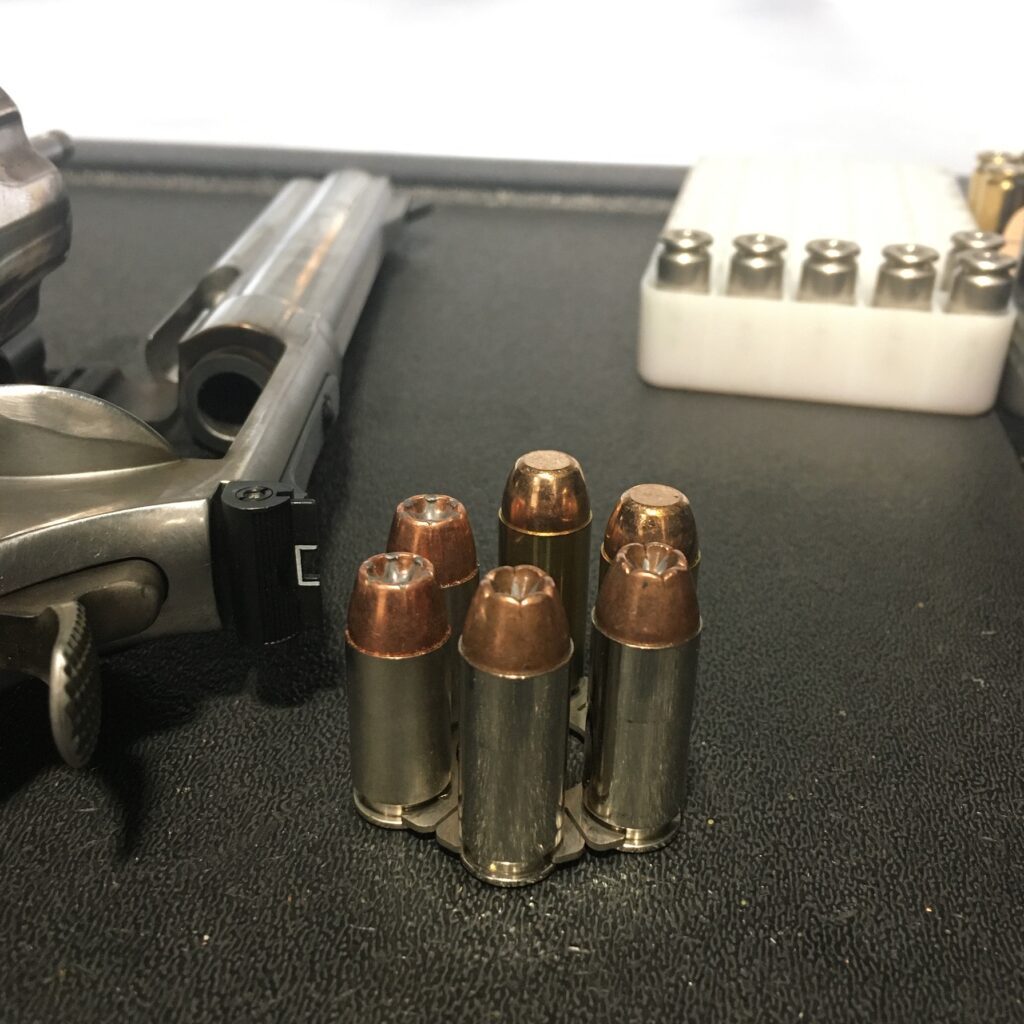
Unlike the 10mm GP100, the 610-3 was 100% reliable with .40 S&W ammunition. I fired a combined 50 rounds of .40 ammo through both both guns without a hint of a problem.
Function: Handling
Obviously, this is a very large handgun. Even the 4″ version is larger – by a lot – than any revolver I’m accustomed to. Still, I dutifully shot the prescribed Dot Torture drills during the first and last 100 rounds. Since I didn’t have a range-appropriate holster, I fired each stage that prescribed a draw from a compressed ready. The first iteration of Dot Torture, fired at 4 yards, yielded a perfect score.
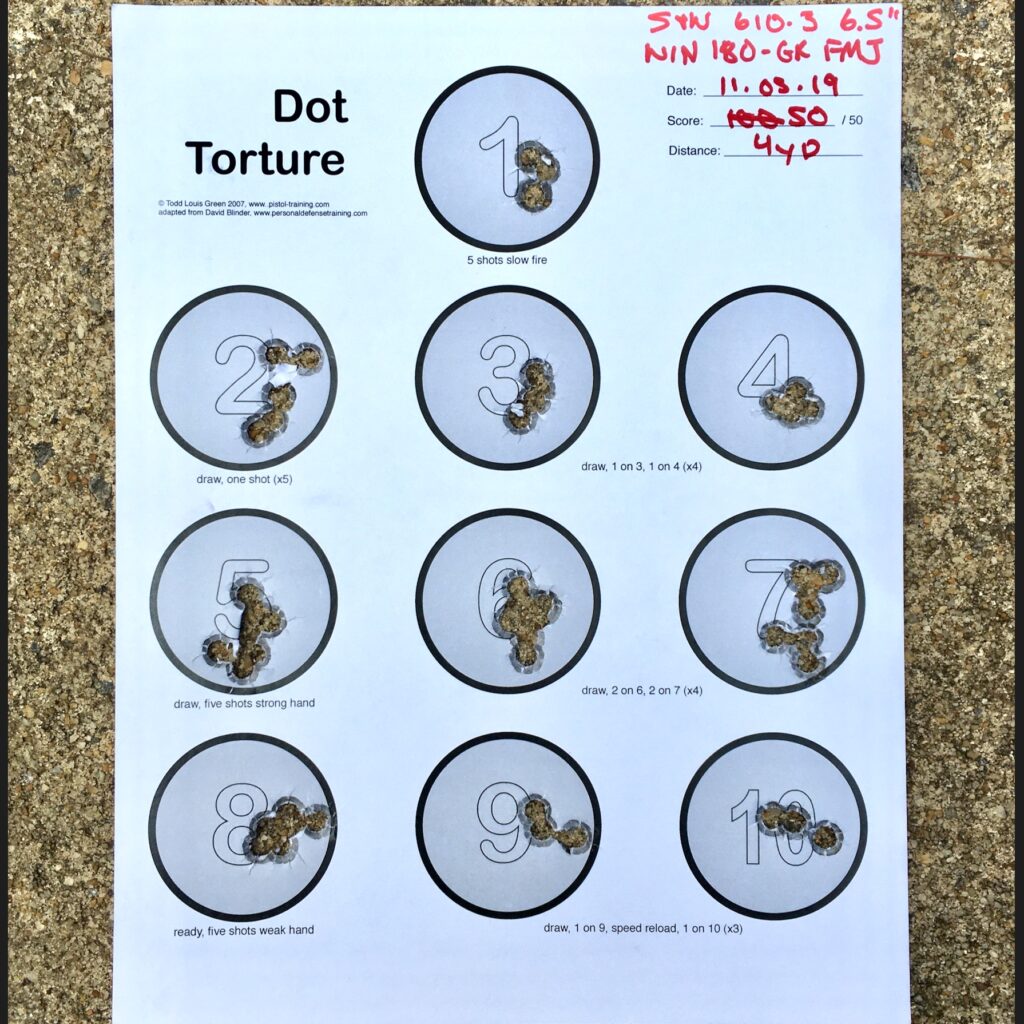
For the second iteration I decided to increase the distance. I doubled the recommended distance and fired at six yards. After I shot it I wished I had increased the distance just a bit more, to maybe seven yards. At six I still managed a perfect score with the big 610-3. This gun is capable of a lot of accuracy, and handles well for its size.
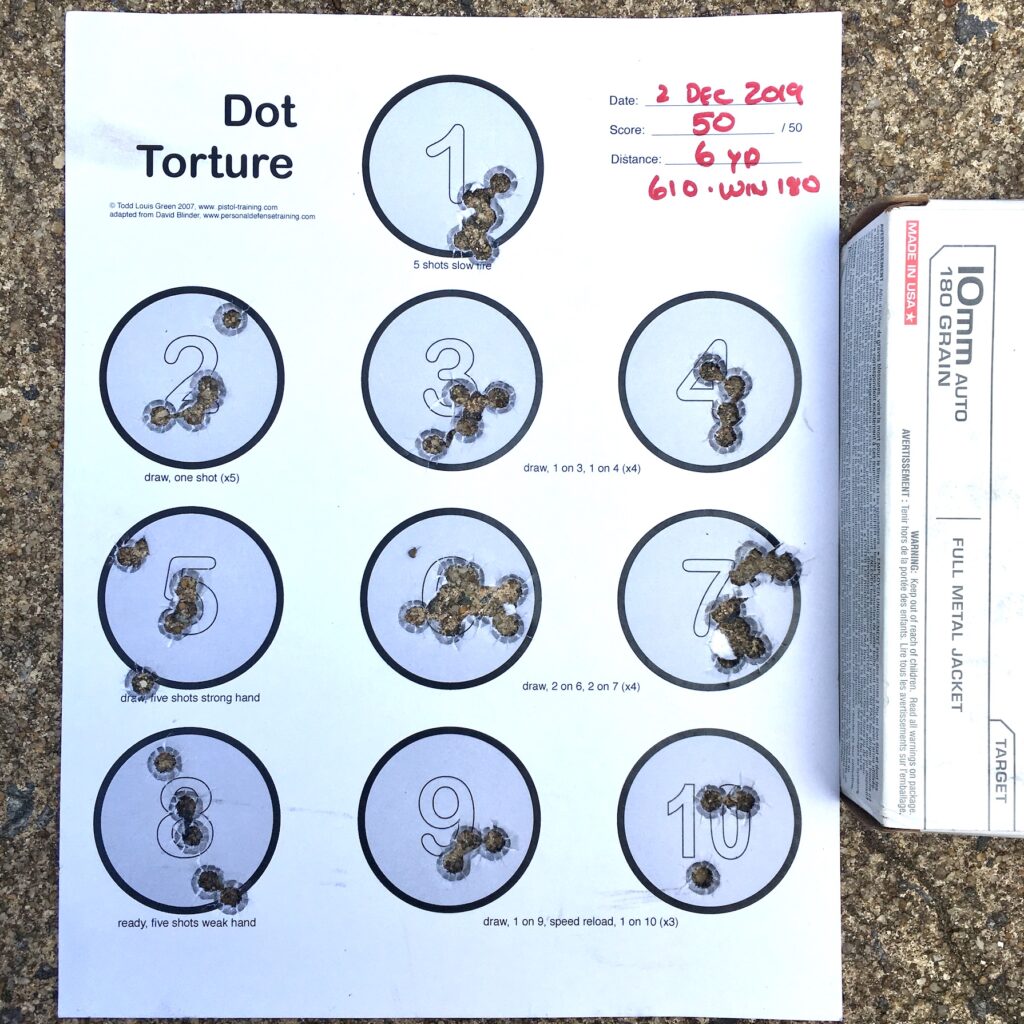
We realize that the Dot Torture drill was not designed as a handgun test, or as a test at all. Still, shooting 2″ circles at six yards does say something about what this gun is capable of, and I have just a few thoughts on handling.
First, this is a very large revolver, especially with the longer tube. Its size, weight, and high bore axis make it just a tad uncomfortable to me. I can’t put my finger on it, but it seems to have exceeded my personal point of diminishing returns in regards to size; rather than being a handy, packable sixgun, the 610 is more of a “rifle replacement.” It would be right at home in a deer blind.
The 10mm is an undeniably powerful handgun cartridge. Several loads I fired, including the Winchester Defenders and Federal Trophy Bonded JSPs, and much of the Double Tap ammo, are full-power loads. The 610 is not at all uncomfortable to shoot with these loads. Not only is it perfectly comfortable, it’s also capable of some tremendous accuracy!
Function: Accuracy
I am stunned at how practically accurate the 6.5″ 610-3 can be. I’ve never spent much time with revolvers with barrels longer than 4″ (or N-Frames for that matter) but this has definitely made me recognize their value. I recorded several groups here and was gobsmacked with my own results. As usual, all groups were fired at 25 yards, offhand, and in double-action. The four 10mm loads that I fired for groups include 3 loads that could crossover between self-defense and hunting light game, and a dedicated hunting load.
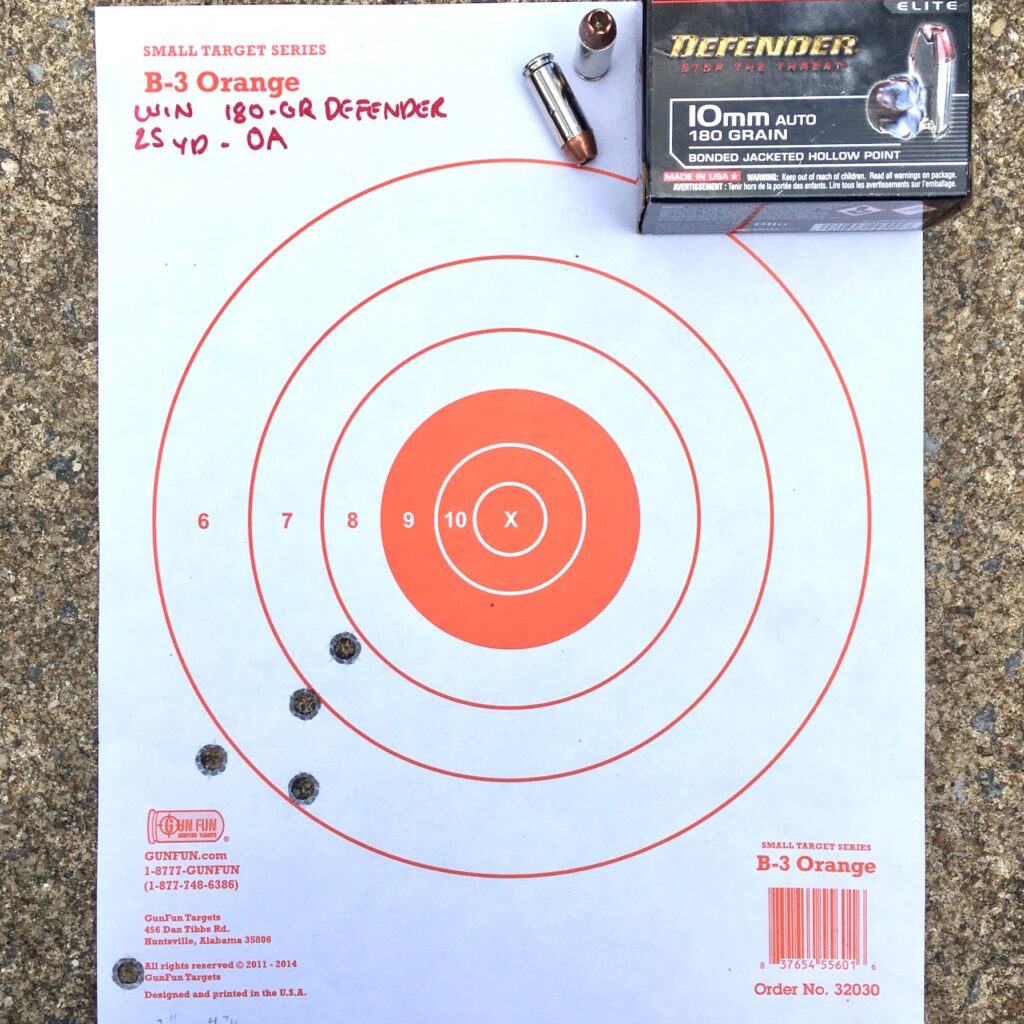
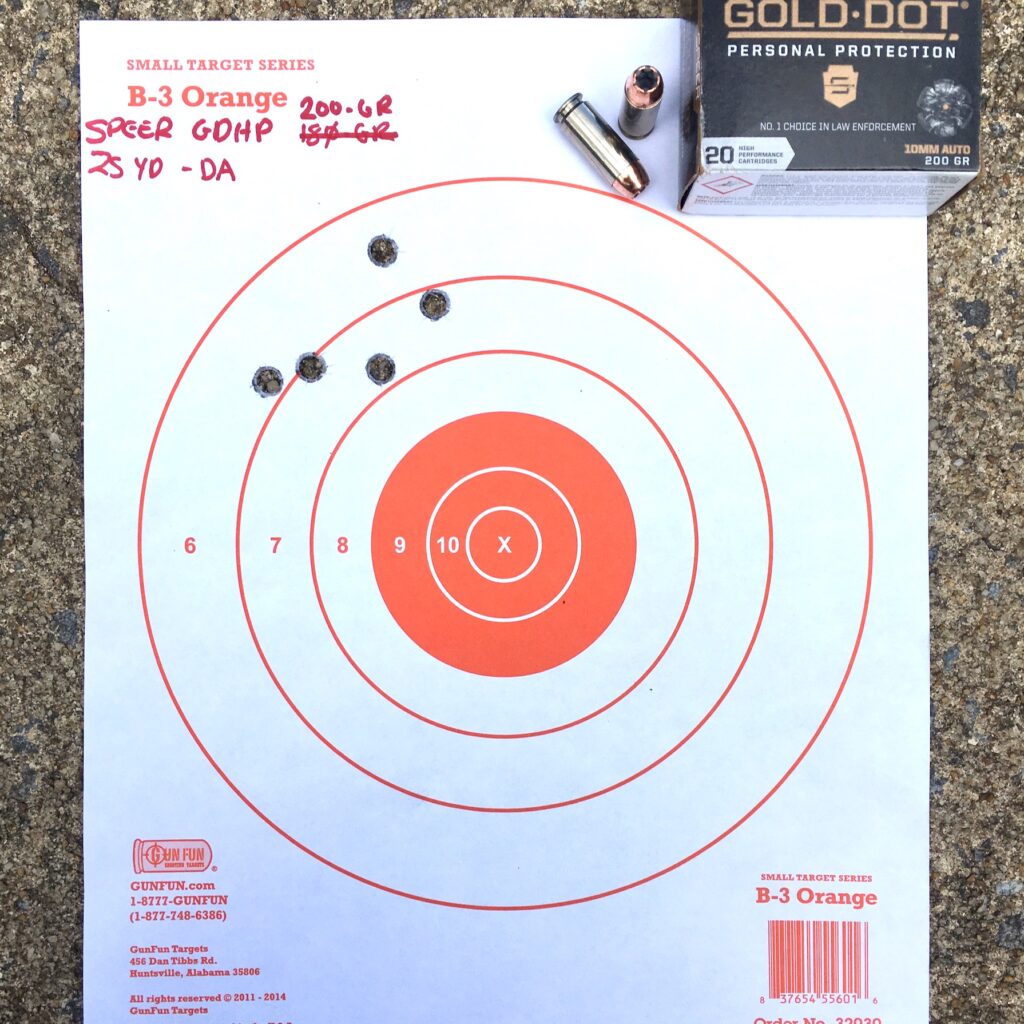
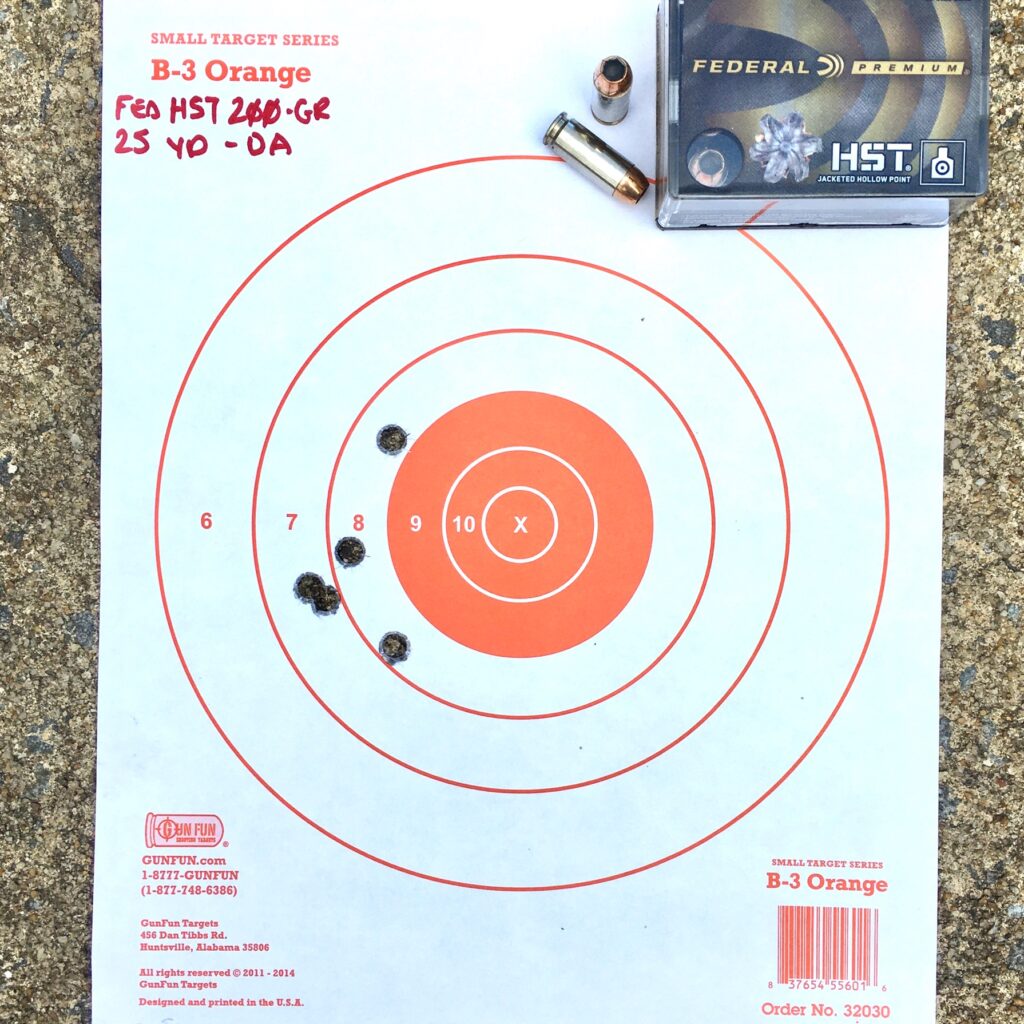
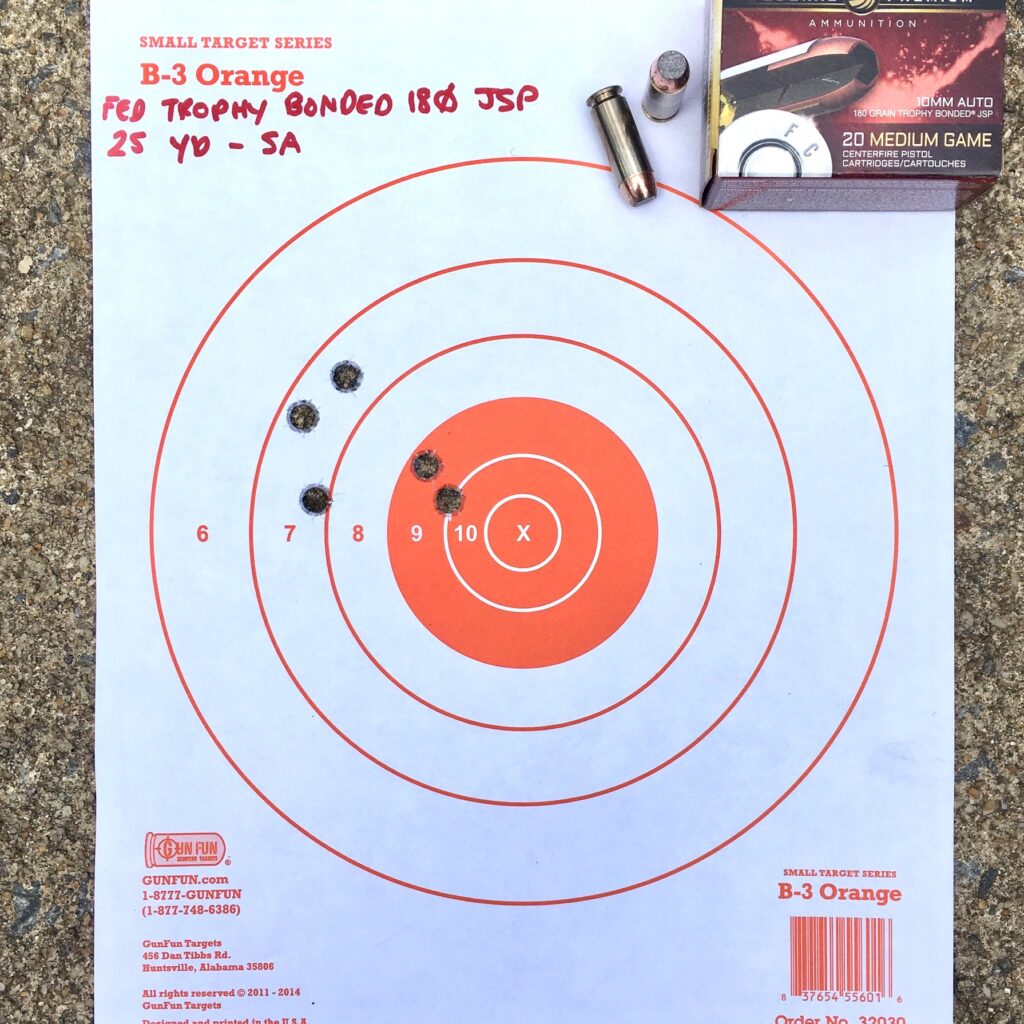
I also recorded a group with a .40 S&W load, Speer’s 165-grain Gold Dot. My double action group was not too spectacular compared to the 10mm groups I fired, so I re-shot in single action for only a modest improvement. I didn’t have any more .40 ammo on hand to follow-up on this, but it’s possible the increased amount of free-bore in the cylinder negatively impacted accuracy.
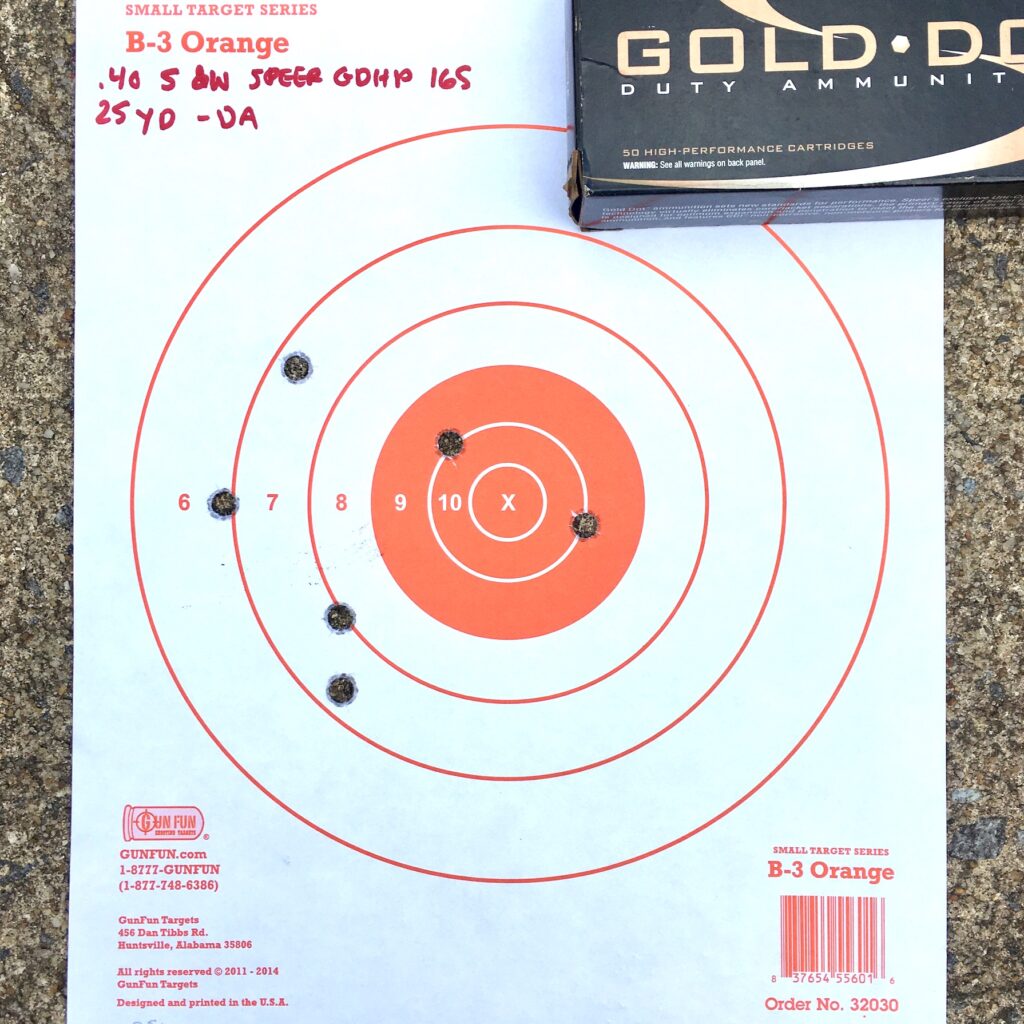
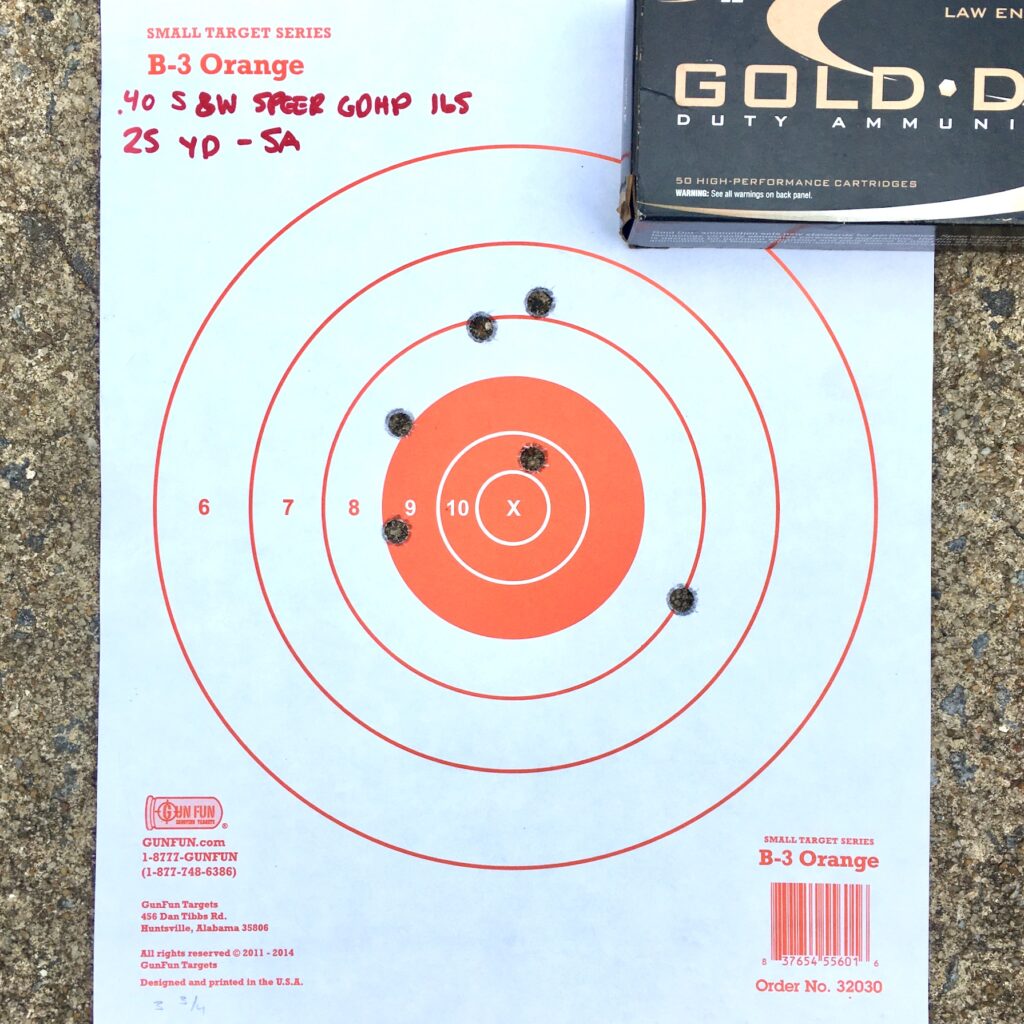
Again, no one is more surprised by these groups than me. Regular readers know that I’ve never turned in a group of less than two inches. On my very last session with this gun I was doing some informal shooting at a 25-yard target. Two RSOs walked by and commented (loud enough for me to hear), “That guy can shoot!” I turned, grinned, and shook my head. “Nah, this thing shoots itself,” and it does feel that way a little bit. I would feel perfectly comfortable taking a DA game shot with the 6.5″ 610.
Please note, though, that this accuracy is in spite of the onerously heavy trigger. You get a bit of a feel for this in looking at my targets. Nearly every group is slightly to the left, despite the sights being regulated for center-of-mass. Some Wilson Combat replacement springs would likely do wonders for this revolver. On the other hand, these groups are doubtlessly aided by the smoothness of the trigger, which is exemplary.
Comparison with the 10mm Ruger gp100
A comparison between the S&W 610 and the 10mm Ruger GP100 does not seem out of place here. We have been covering the 10mm Ruger for long while now, and it has a well-established baseline here. Further, both are double action, 6-shot, 10mm revolvers – a rare breed of firearms if there ever was one. Both seem to target the same pool of prospective customers, and there are a couple of places that each revolver shines.
I had quite a bit of trouble getting .40 to work in my GP100, but the 610 digested it with aplomb. This is desirable for a number of reasons including competition, use of less expensive ammunition, and ammunition compatibility in disaster or ammunition-shortage scenarios. I’ve seen some GP100s work fine with .40 on the internet (interestingly they all seem to be 3″ variants). It’s possible I just got a bad one, but it’s also possible that mine is indicative of the majority. The 610 is a hands-down “win” in this column.
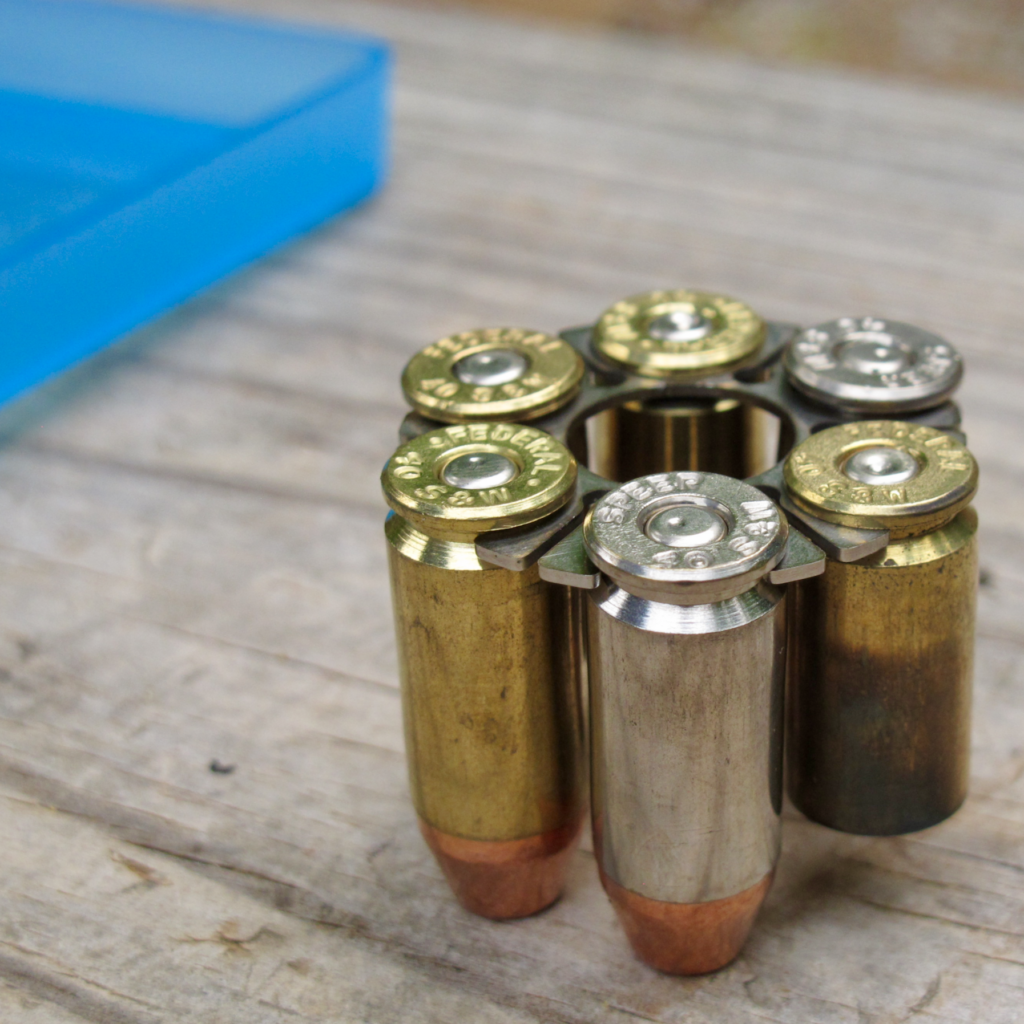
Another obvious area for comparison is barrel length. The Ruger wears a 4.2″ tube. This is matched by 610, which is also available with a 6.5″ barrel. . On the other hand, the 10mm GP100 can also be had with a shorter 3″ tube. I’ll mark this one down as a wash as it totally depends on user preference and the intended use of the revolver.
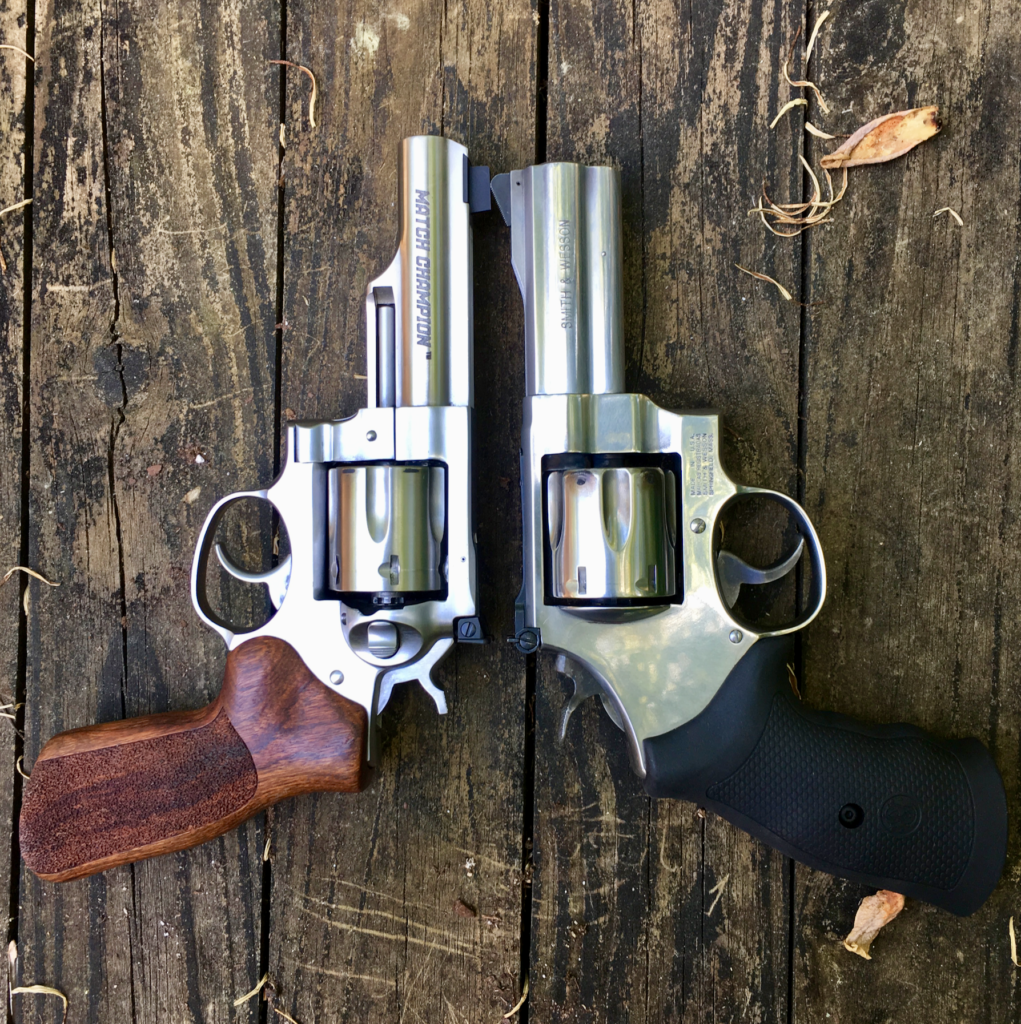
Triggers are another area of some disparity between the Ruger and the 610. My GP100 has a smooth trigger, but the 610s is incredibly smooth, and this difference is most evident in single action. Though I hate to use this term, but the 610’s SA trigger breaks like the proverbial “glass rod” – with no movement at all until it goes. But, there’s also the issue of trigger weight; The GP100 has a much lighter trigger than the beefy 610. Out of the box the Smith trigger is a beast, and it influenced the accuracy I was able to achieve.
Then there’s size and weight to consider. When Ruger released the GP100 in 10mm I was shocked. They’d managed to pack the 610’s potency – six rounds of 10mm – into a L-Frame-sized gun. Comparing the two is, well, not even a comparison; the Ruger is much more svelte and easy-handling than the chunky N-frame. Not only is the N-Frame Smith larger, it’s also heavier, weighing in at a 43.1 or 50.1 ounces (4-inch, 6.5-inch, respectively) versus 37.9 for the Ruger. In larger calibers the added weight might be desirable, but I don’t find the 10mm needs it.
On the other hand, if this revolver is intended as a rifle-replacement – say as a hunting gun – this might not matter so much. These guns are very much in different classes. The GP100 could be used as an all-day carry gun, but probably isn’t as practically shootable, while the 610 would be fine to carry to a tree-stand and back, where its size and weight are beneficial.
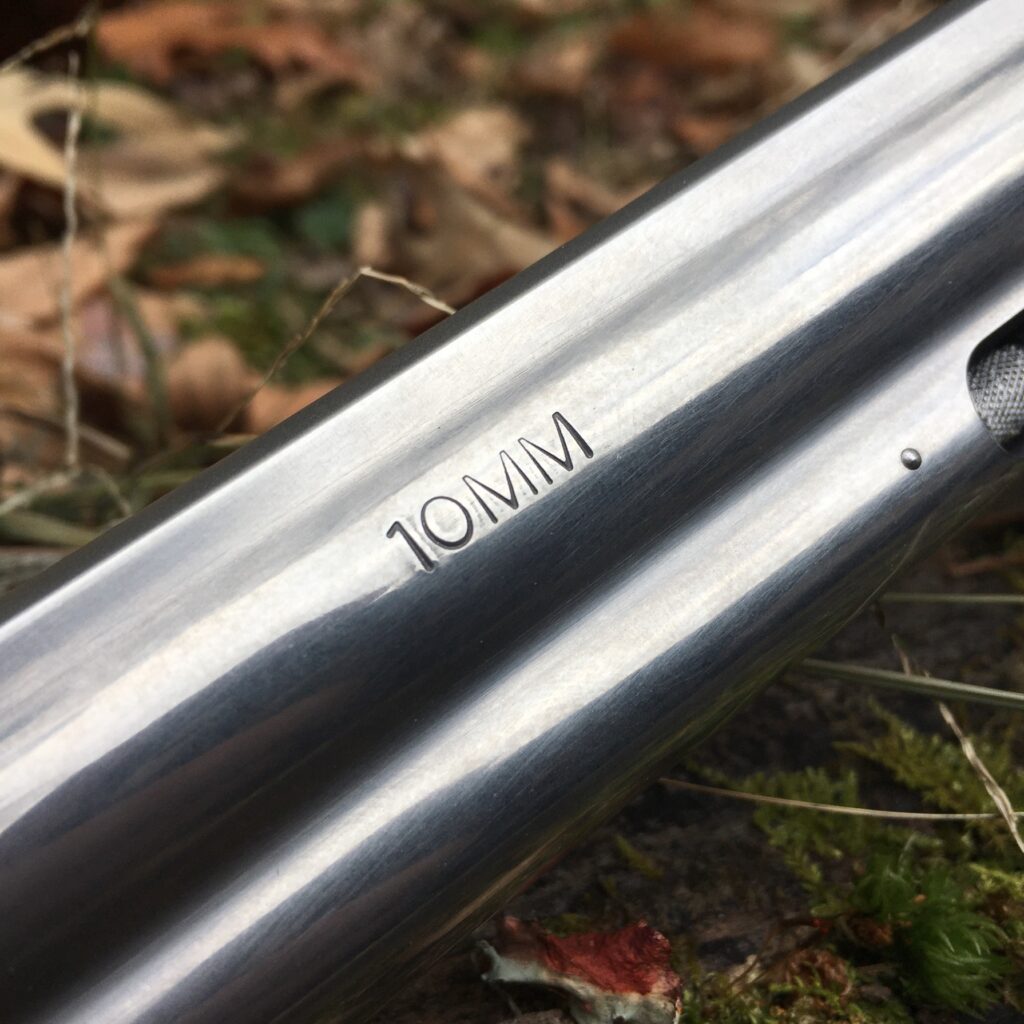
Finally, there’s the issue of the lock. The Ruger, obviously, doesn’t have the ugly lock hole. It also doesn’t present the risk of locking up inadvertently. Since I believe this risk is primarily posed with light guns under heavy recoil it’s probably not a massive risk in the 610. The more I shoot new S&W guns the less I seem to notice the lock, but it’s still pretty much a deal-breaker for me. That said, I wouldn’t fault anyone willing to live with it.
I think the comparison between the 10mm GP100 and S&W’s 610 is somewhat of a false one. Though they shoot the same caliber and do so from a rotating cylinder, they seem optimized for different purposes. The Ruger is the easier packer, while the 610 is the easier, longer-range shooter. What matters most to you is, well, up to you.
The Bottom Line
I admit some prejudice against this revolver early on in this review. I didn’t like the size of the 610, and the manufacturing defect with our first T&E sample turned me off, too. I went into shooting the second gun with an open mind and was totally surprised. Though the large-frame 610-3 isn’t my cup of tea, I found myself really appreciating it. It’s accurate, reliable, and robust. I’m very happy to see the 610 back in production!
Support revolver Reviews Like This one!
I would like to offer a huge ‘thank you’ to our Patrons! You guys make reviews like this possible. Each one of these reviews costs several hundred dollars and many hours of time. We are not kidding when we say we couldn’t do it without you. Thank you! If you aren’t a Patron, please consider supporting RevolverGuy!
Also, my apologies for the lack of a Patreon graphic the past couple of weeks. This is my girlfriend’s busiest time of the year at work. I haven’t forgotten you guys!

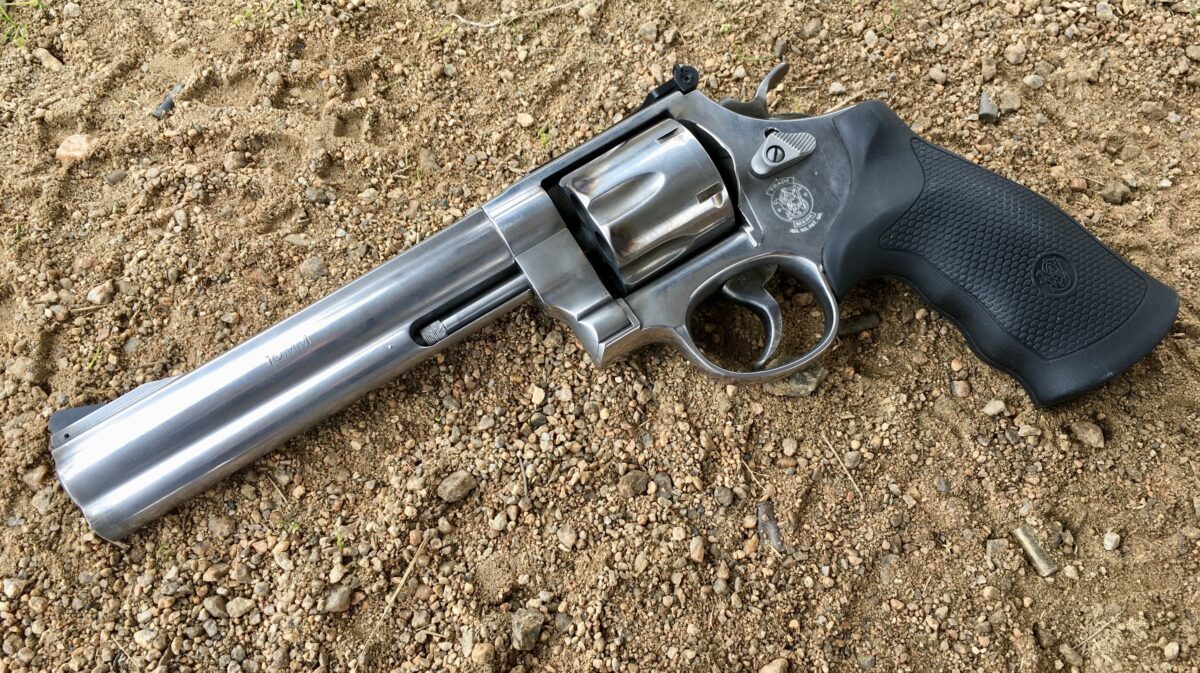

Just came out of a deer blind. I have never seen the reason for handgun hunting, though a GP100 .357 goes along with me for either a finishing shot on a dying animal or protection from a two-legged threat.
But the potency of these 10mm guns suggests another use: bear defense, where a long gun might not be reachable and you might get one shot before Old Slewfoot is upon you.
Justin, thanks for your patience on this one. It sounds like Round 2 went a lot better than the first, and I’m glad you stuck with it.
The improper moon clip size puzzles me. I’m trying to figure out why they would have had that size in inventory, if not for this gun? I kinda doubt the earlier 610s from the 90s took a different size. It’s possible, I guess, but it seems unlikely. What a strange development. Glad they finally got you the right ones, so you didn’t have to poke them out, one-by-one.
The poorly timed barrel is definitely a S&W thing. My 640-No Dash suffers from the same, unfortunately. RevolverGuy Dean Caputo helped me out by opening up the fixed rear sight asymmetrically with a few file strokes, but it’s frustrating that they aren’t getting these timed right. I suppose that’s one advantage to the newer, two-piece barrel designs that I haven’t warmed up to yet.
A 6” steel N-Frame in 10mm would be a dandy hunting revolver, and even though I hate the lock, I’d be surprised if it self-engaged on this gun. If S&W had built it on an Unobtanium frame, or put a stubby barrel on it, then maybe, but all that heavy steel should lessen the risk, as you noted.
I think we all got treated to a demo of how a dryfire regimen can help to shrink groups! Excellent shooting, buddy!
Mike,
I can tell you those clips wouldn’t fit my early 610 either!
Thanks, Mike! That accuracy was a little be me, a whole lot the gun. That just wouldn’t have been possible with a lot of revolvers. Like I said, no one is more incredulous than me!
Thanks for the good article, Justin. If those TK Moon Clips accepted 10mm rounds, I bet they were for the elusive 646 L frame .40S&W, made around 2003. It’s great that S&W reintroduced the 610, it’s another firearm to add to the foothold of the 10mm’s platform. As you pointed out, The Ruger Match Champion GP-100 is a much more practical revolver for the cartridge if you actually plan on carrying it. If you want a substitute rifle in an N frame long barreled revolver, A .44 or .41 Magnum seems to make more sense than the 10mm. It makes me crazy that S&W can make J frames in .357 Magnum no problem, but they won’t put out a 6 shot L frame 10mm. The QC problems you described are too common these days, how can Big Blue continue to let revolvers leave Springfield with barrels not properly indexed? I hate to accuse them of phoning it in, but us revolver folk don’t seem like a high priority to S&W these days. I wish they would prove that thought wrong…
“Phoning it in.” That’s a good one, Kevin, and more eloquent than the term I used in private comms with Justin to describe their lackadaisical approach to a market segment they could totally dominate if they put in just the slightest effort…
True, while the J frame is legendary, I rated the LCRx, SP101, and the K6S that I bought ahead of it when picking my pocket gun. The inattention to fit and finish was so evident on the new J Frames, though to be fair they were not Performance Center guns.
I think the most accurate part of that statement is that “revolver folk don’t seem like a high priority…” That rings very true to my ear.
Justin, thanks for your hard work on this review! Great groups! Like Mike said your dry practice is really paying off.
For me what makes the N frame trigger hard is the long reach. Even though it is smooth, the large grip puts my finger at a mechanical disadvantage. I see a similar situation with my 6” GP 100 with full sized Lett grip compared to my 3” GP 100 with compact Lett grips. With the smaller grip and shorter trigger reach my finger just has better leverage. Just my two cents.
I bought one of these new issue Model 610-3. It looks very good overall with aligned barrel. I did have the sight screw back out but I hit it with some thread locker. Glad to see this model back.
I shot USPSA for years with a 610 no dash (no lock, pinned extractor and firing pin on the hammer). I got the gun used at a gun show. It had a 6.5″ barrel so I sent it to SDM Fabricating to have the barrel cut to 4″ and have the charge holes chamfered and numbered. SDM had a factory 4″ barrel with interchangeable front sight, so I had them install that instead.
Using moon clips and with the chamfer the short straight wall .40 S&W’s dropped right into the slightly tapered and longer 10mm chambers. A very fast loading setup. Best gun I ever had.
Justin, I’ve owned 610s since my first 5” in 1990. I’ve owned all the dashes. Currently I have 1999 610-1 Classic and a 2007 610-3, both with the 6.5” barrel. Your accuracy results are on par with what I’ve found with every single one: spectacular in 10mm and acceptable in .40.
I’m glad people don’t have to pay a premium for the scarce used ones anymore- for a while the original 5” with box was selling for north of $2000!
To me the 10mm is right at home in the N-frame.
Anyway, great review. I love 610s and I hope your readers try one of the new ones. They’re really special guns in my humble opinion. I shoot the daylights out of mine with handloads and factory 10mm and they shrug it off. Sometimes I find shocking deals on 40 so slum a bit and run those too.
Thanks again! Great review.